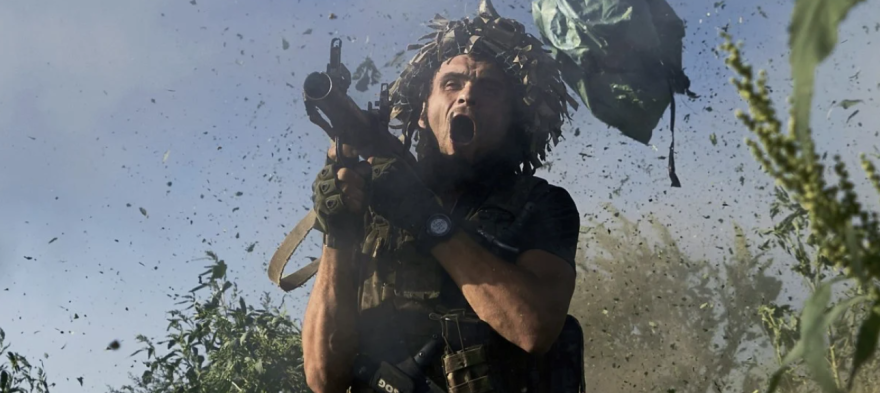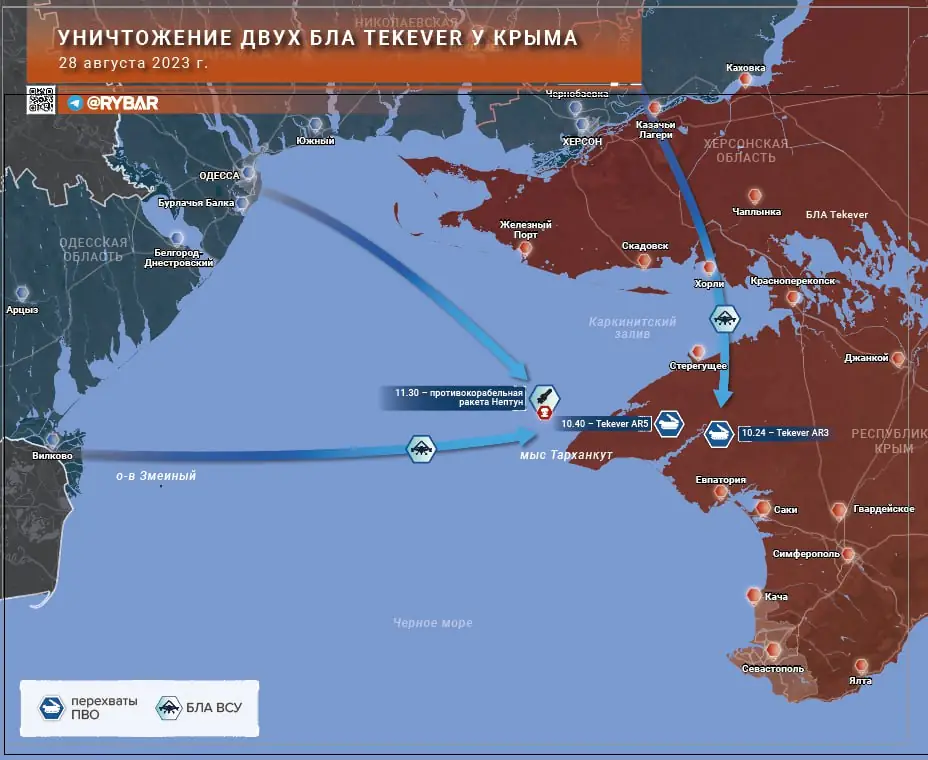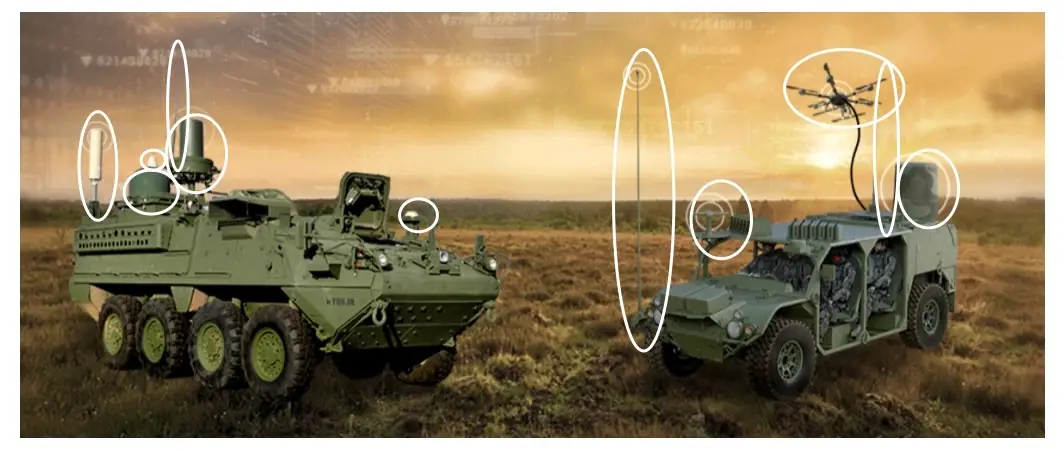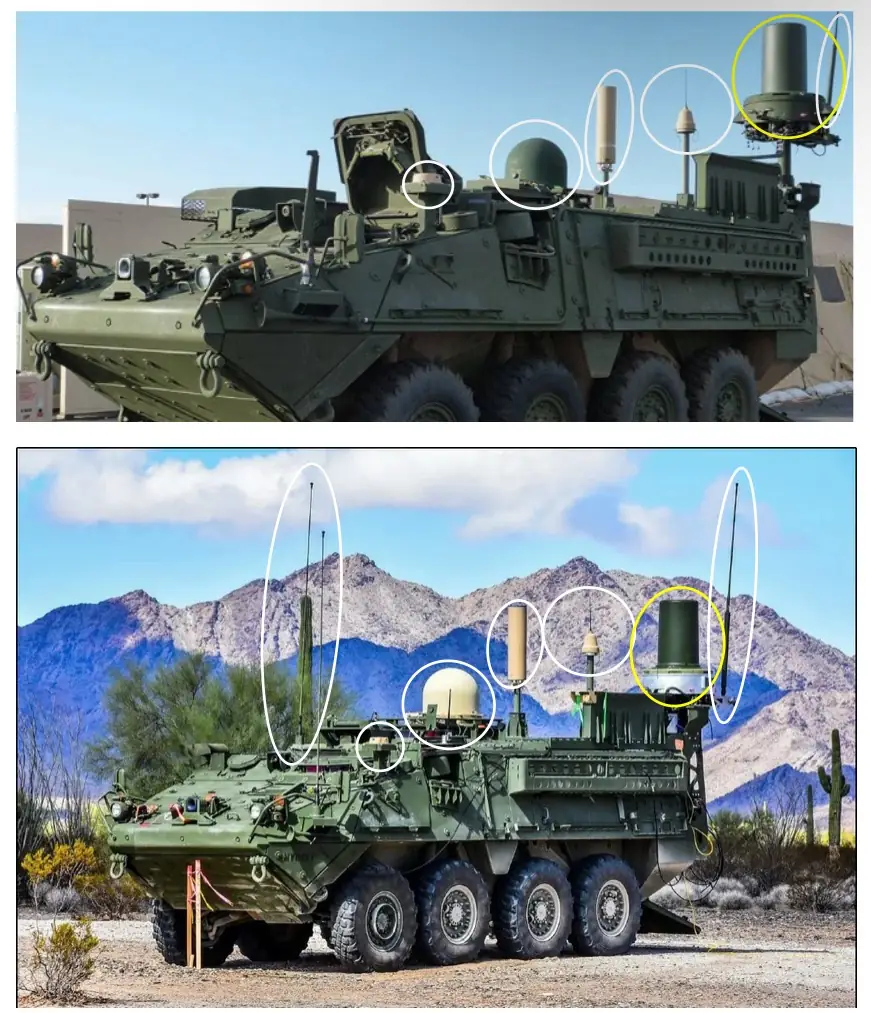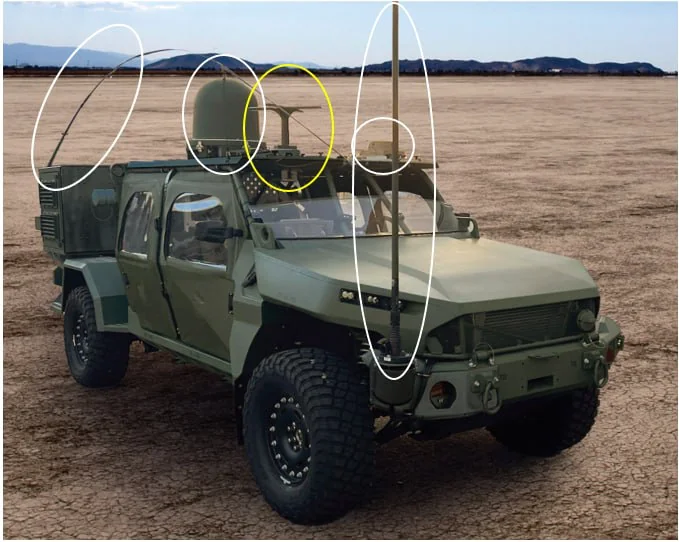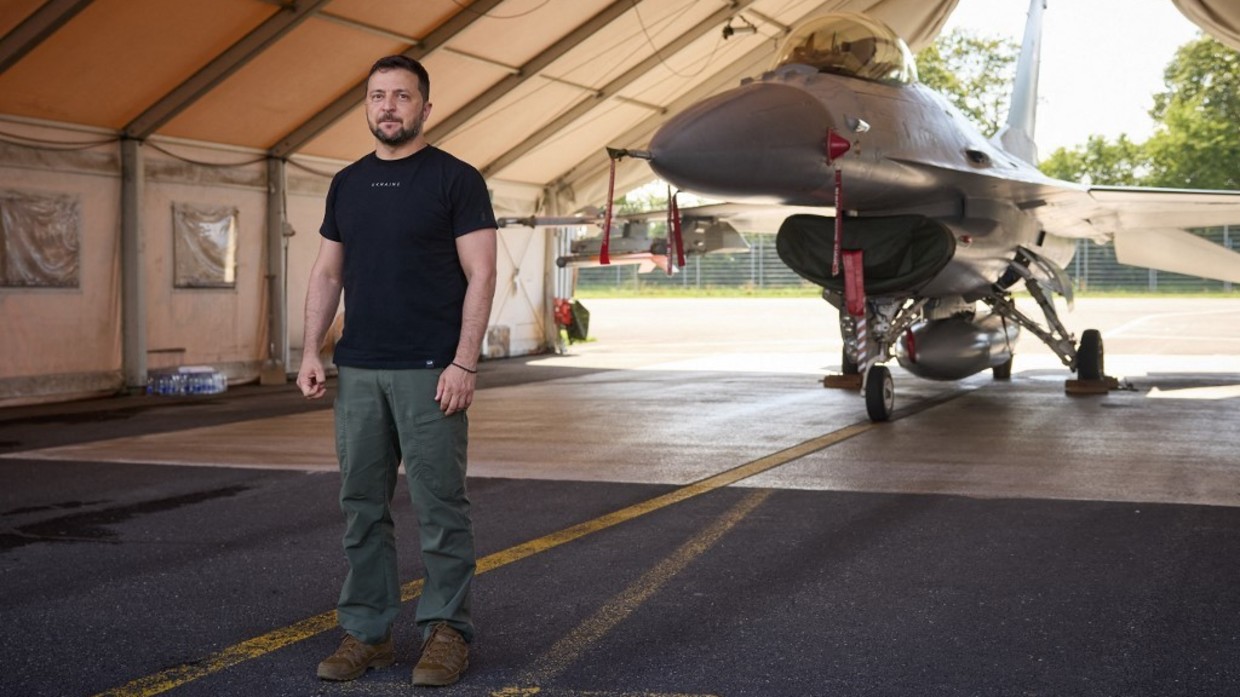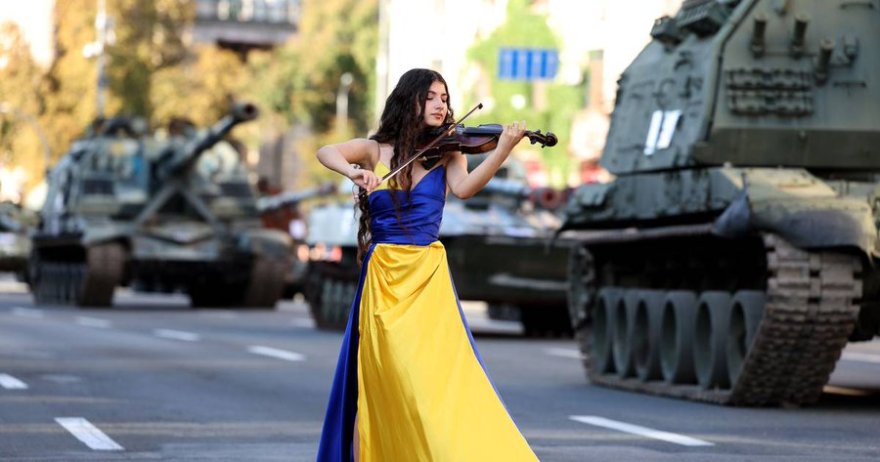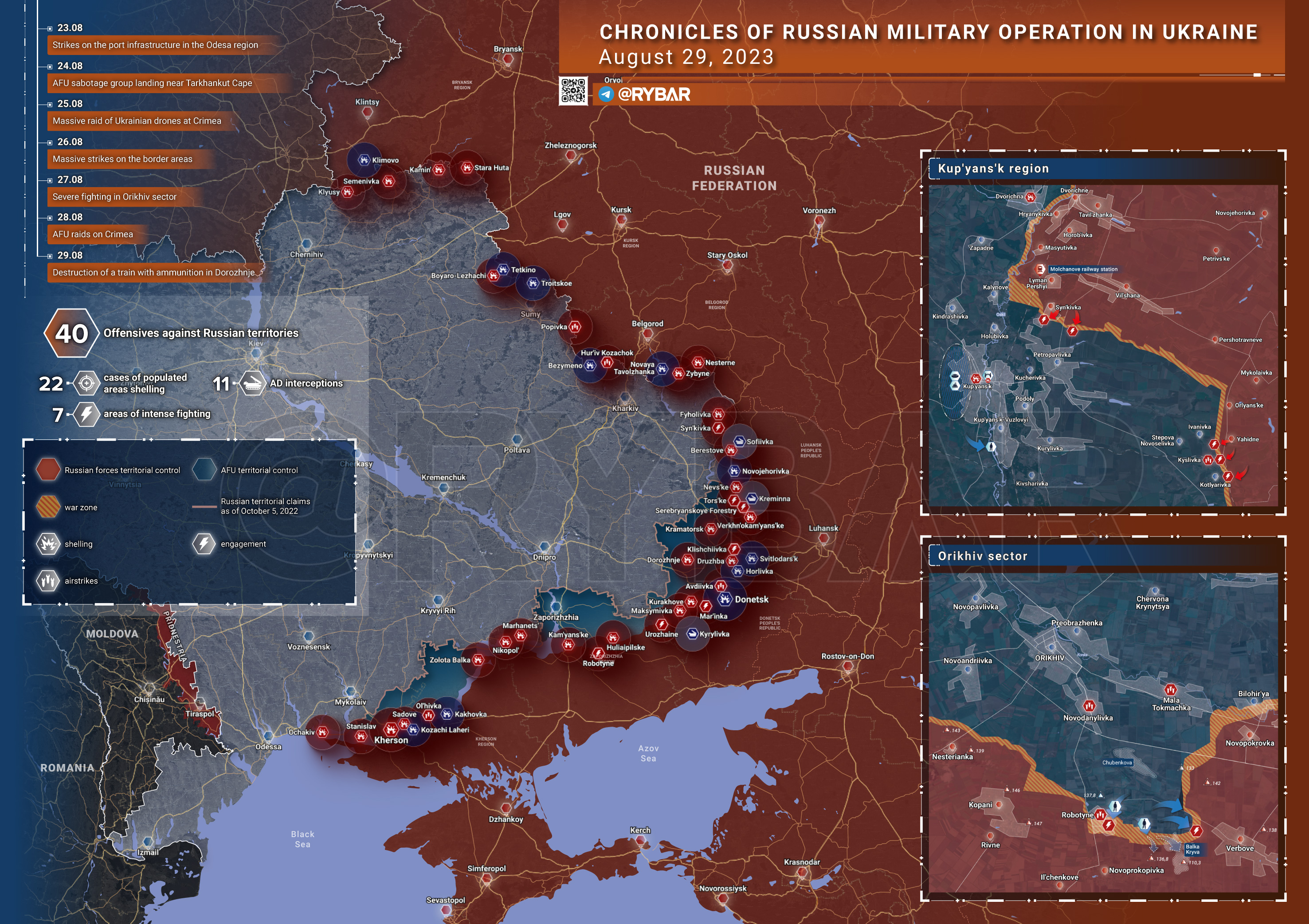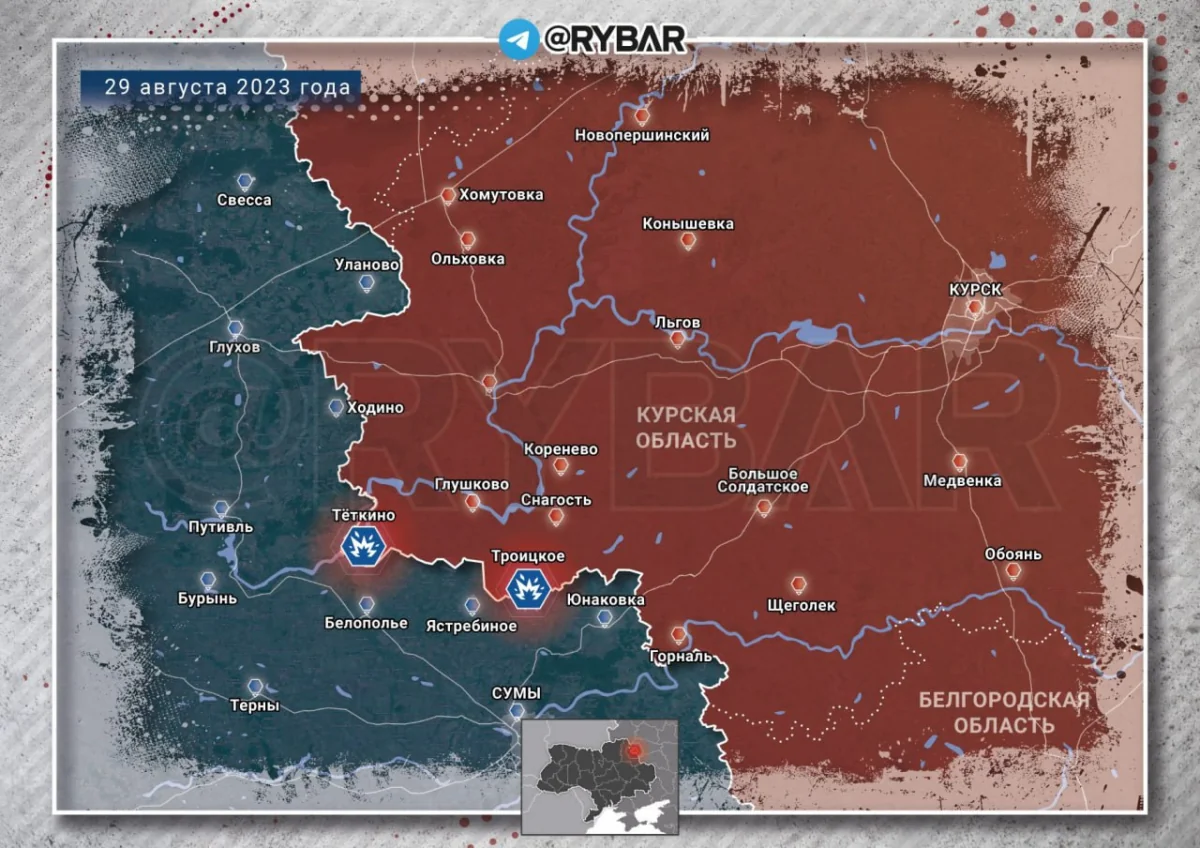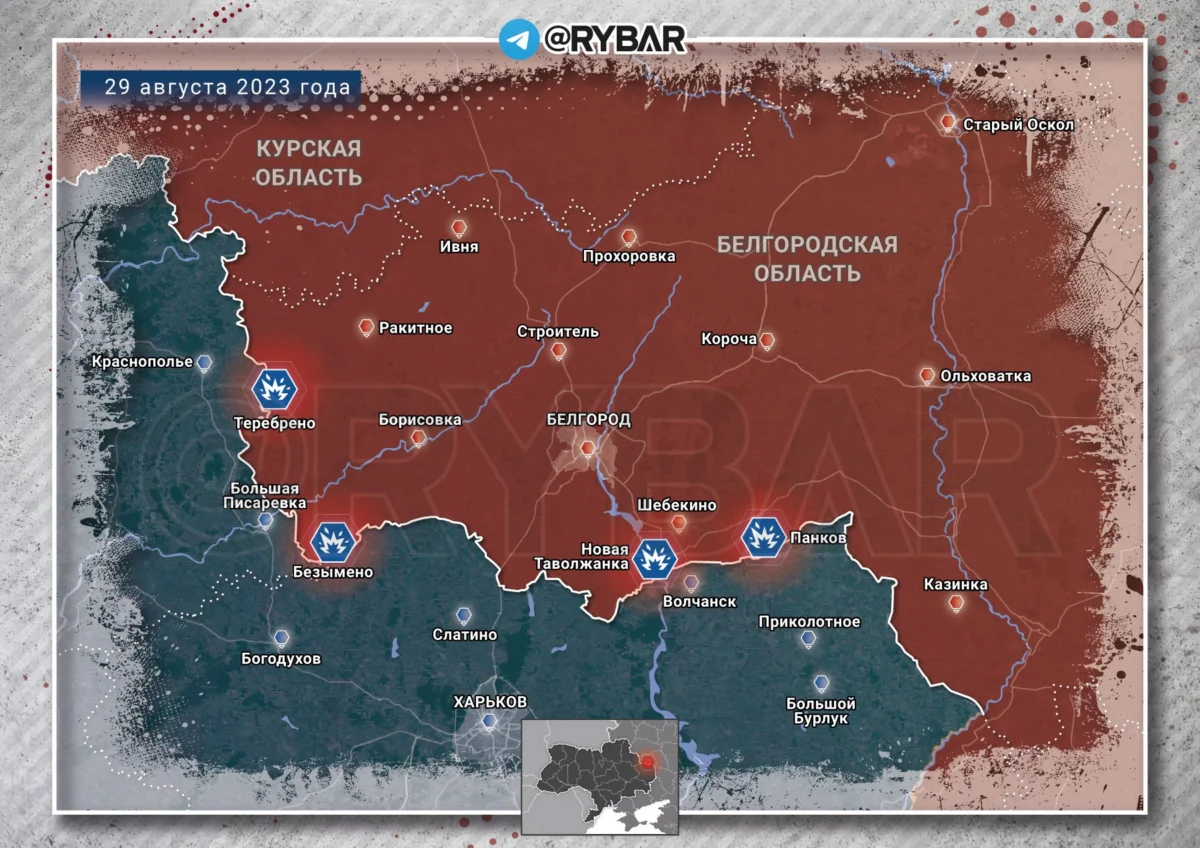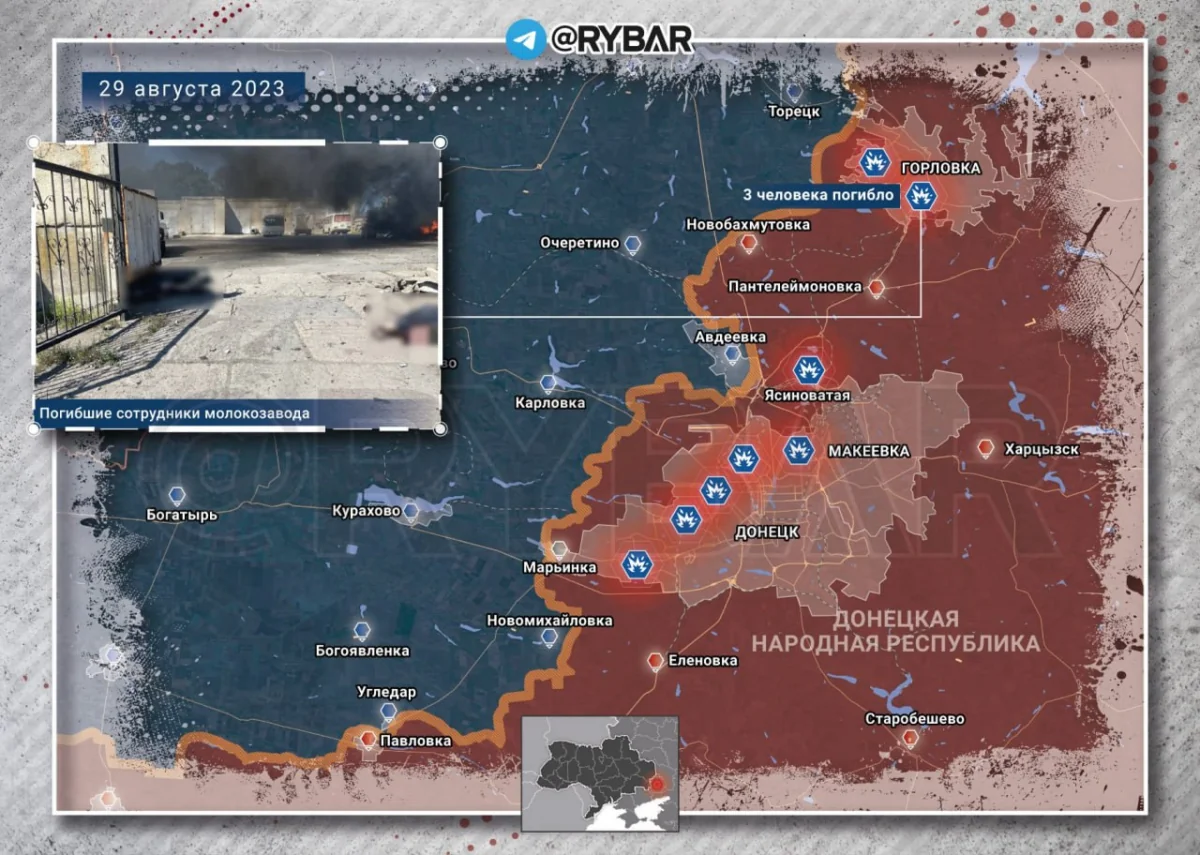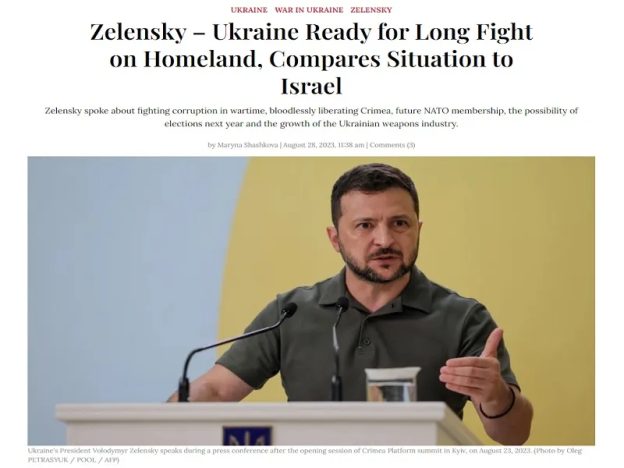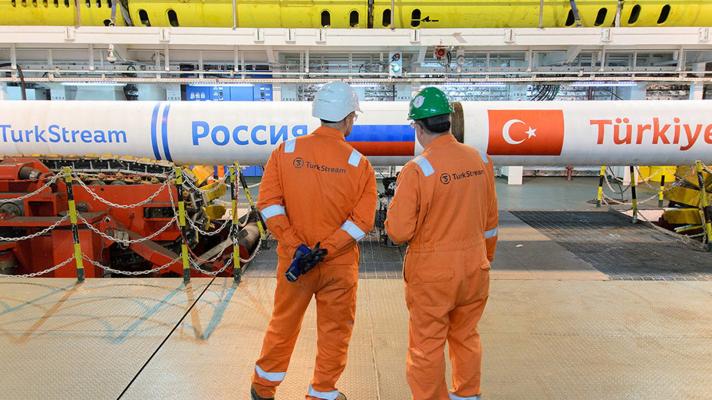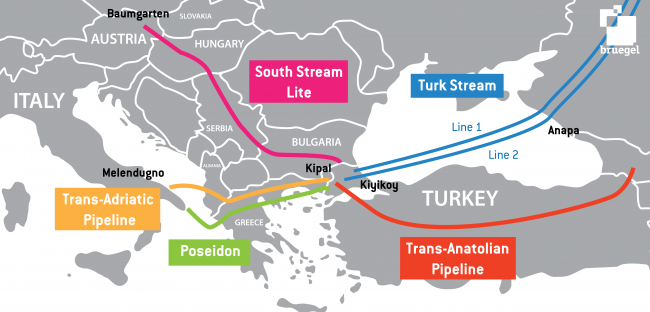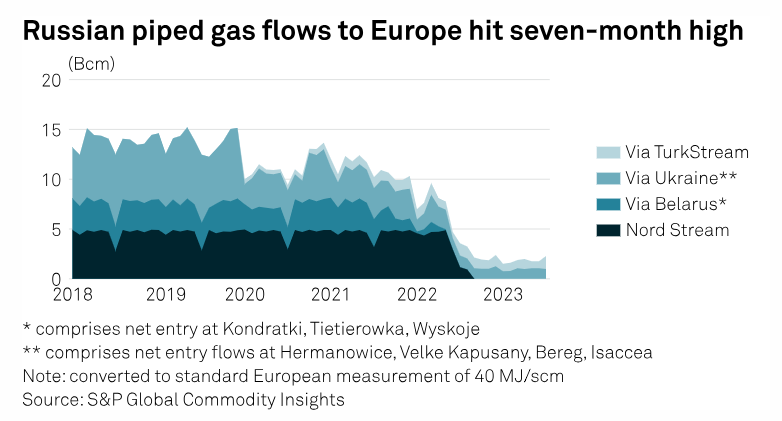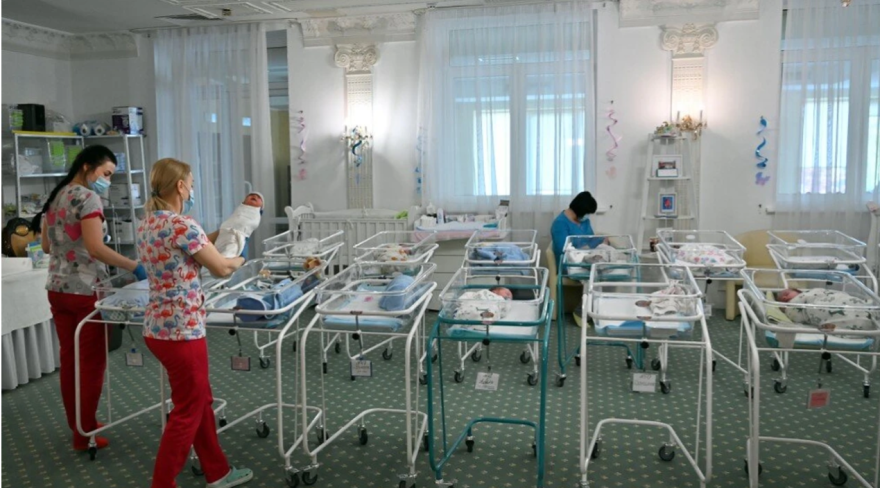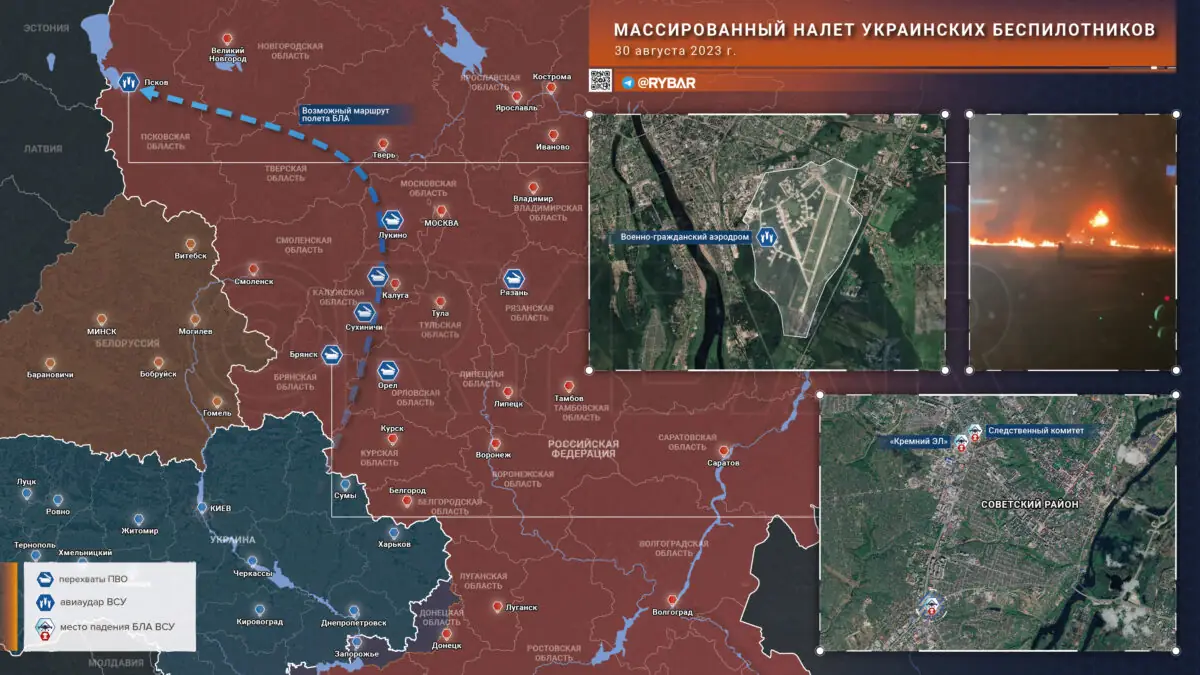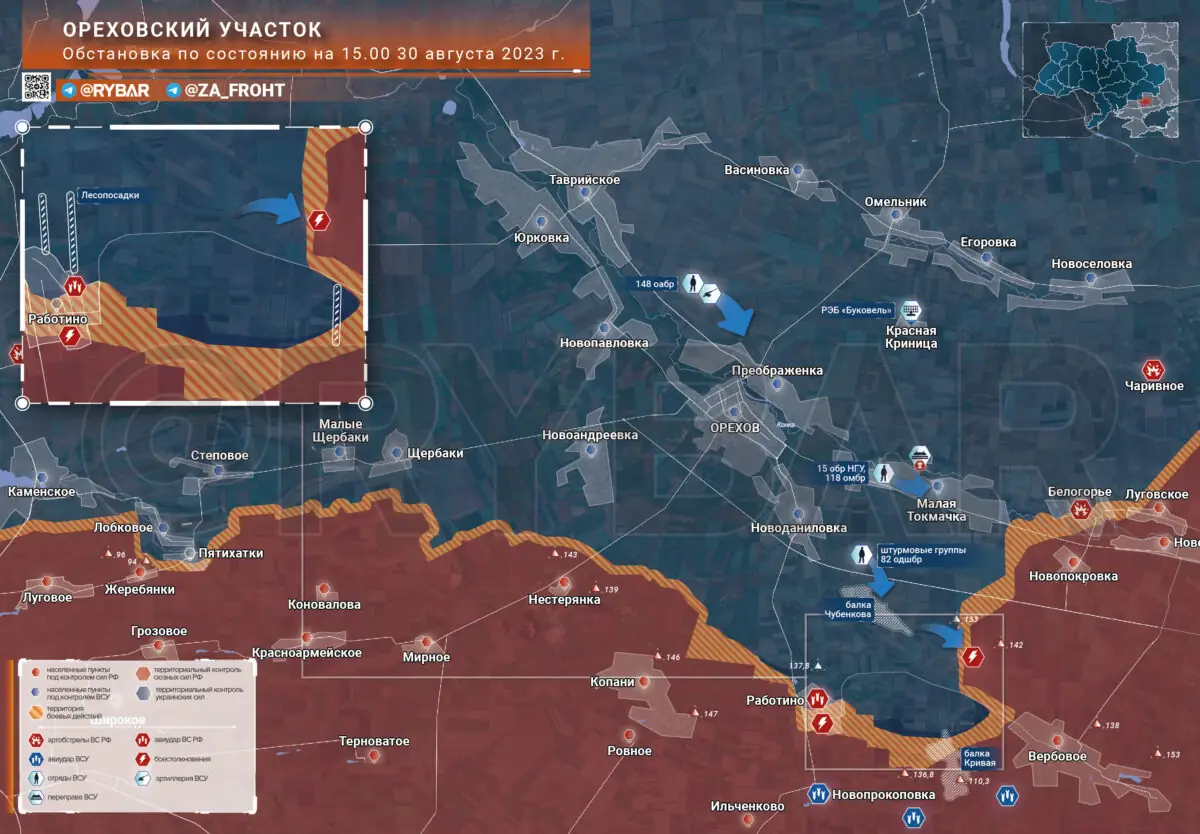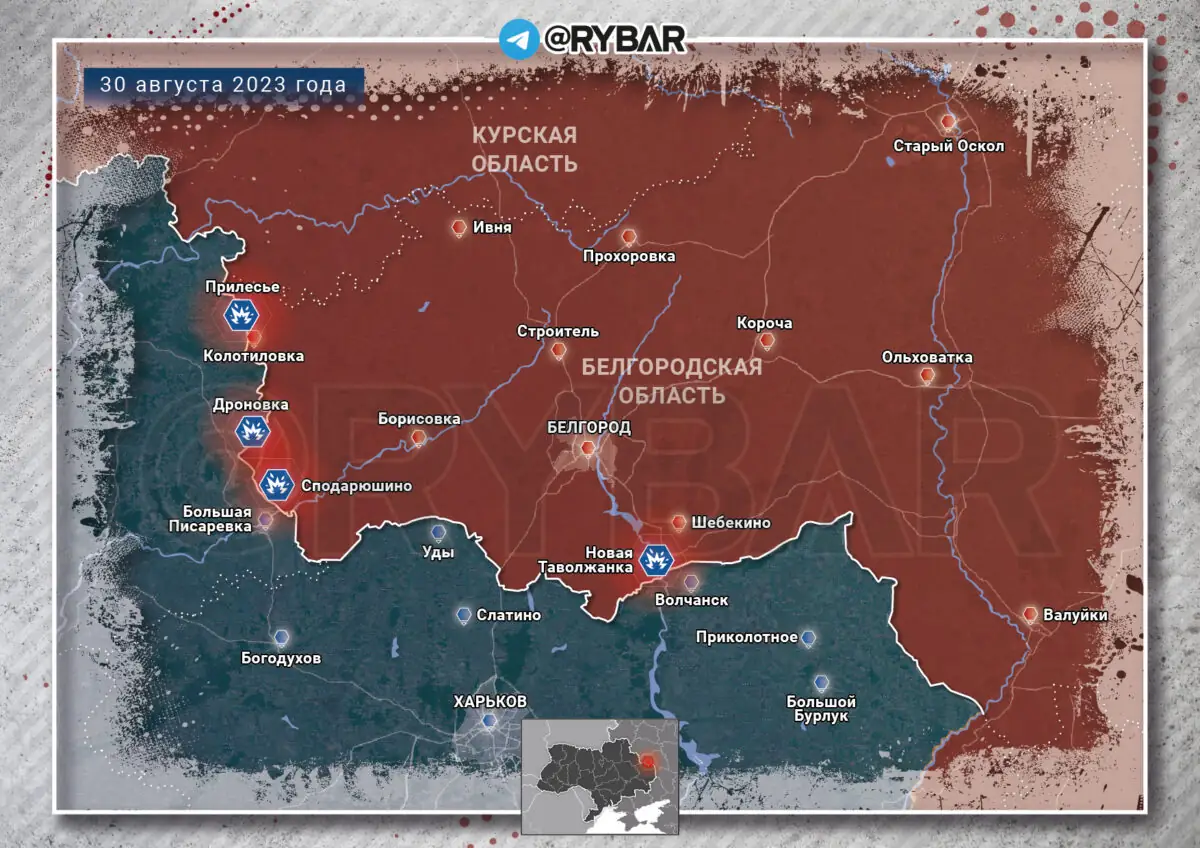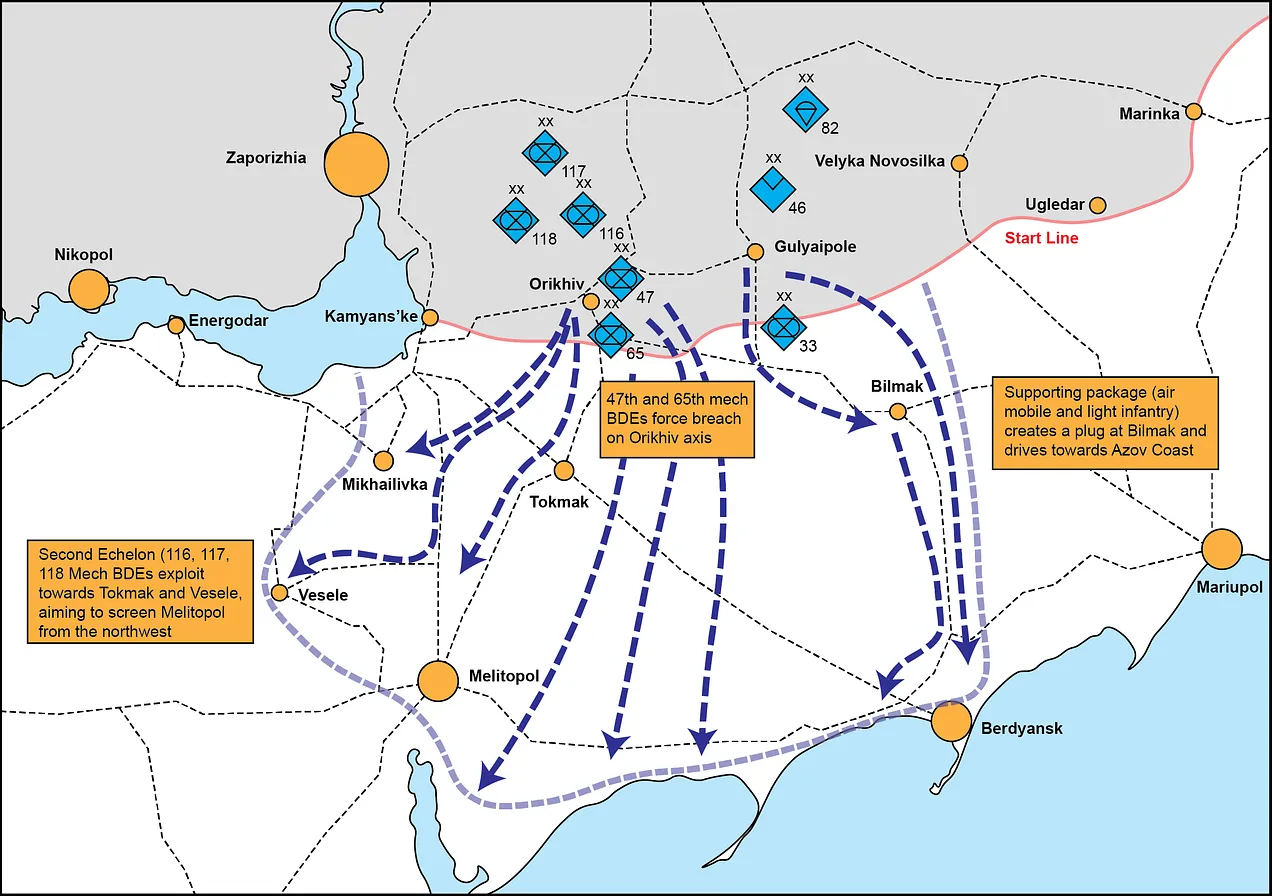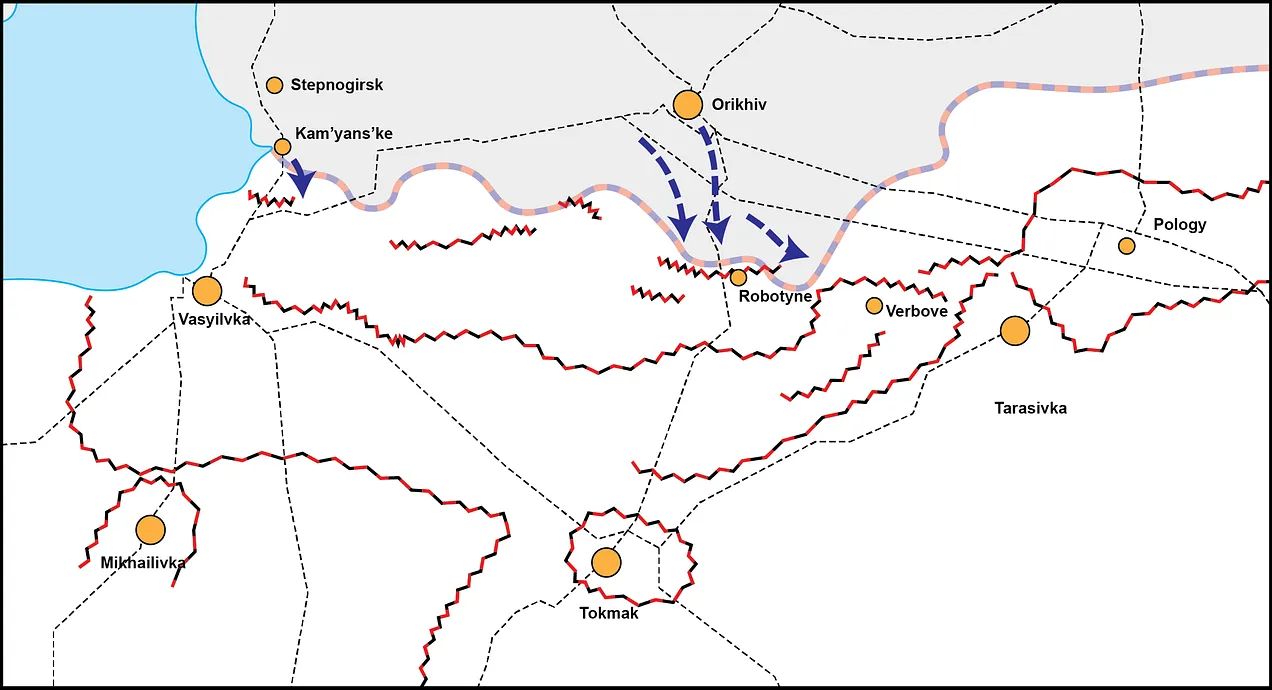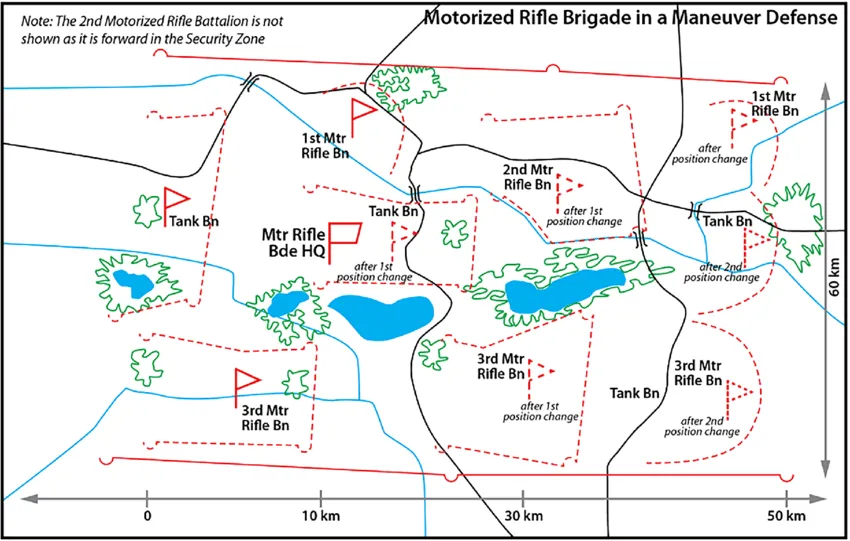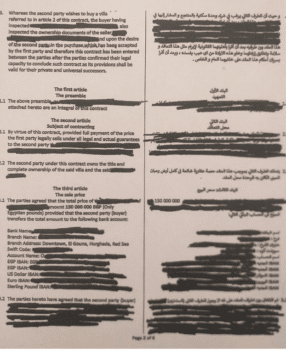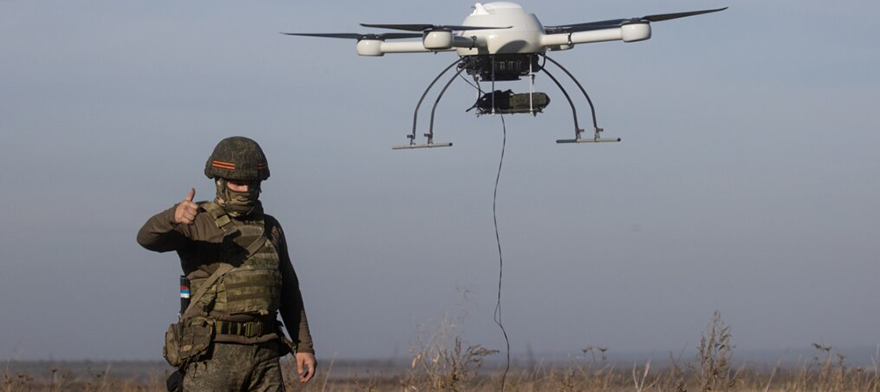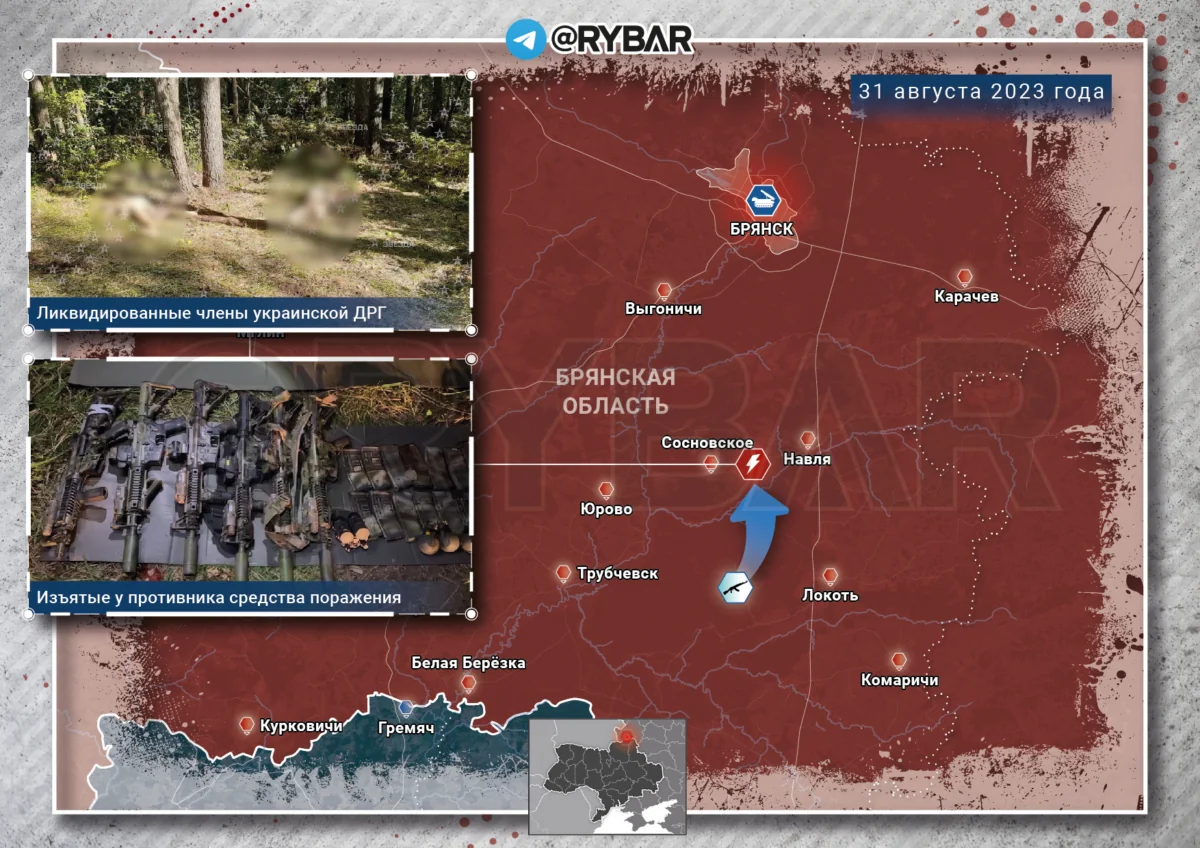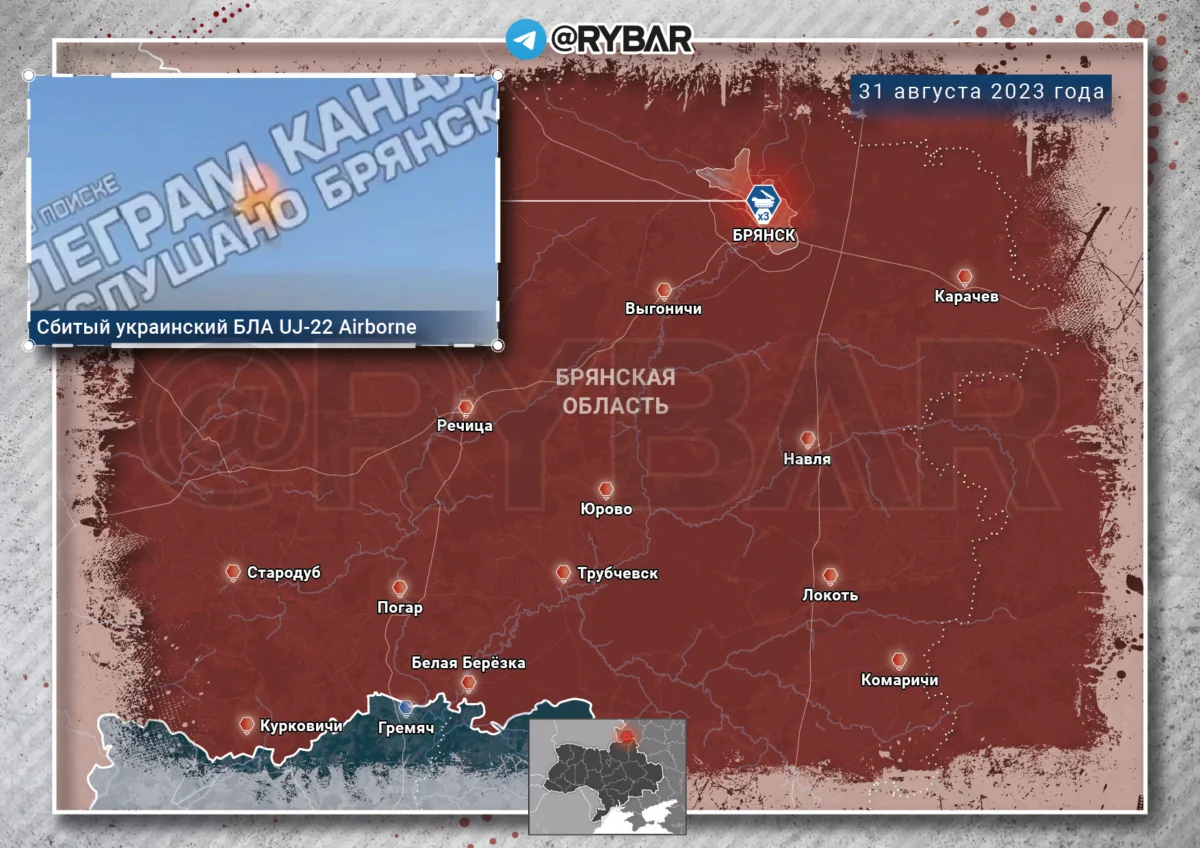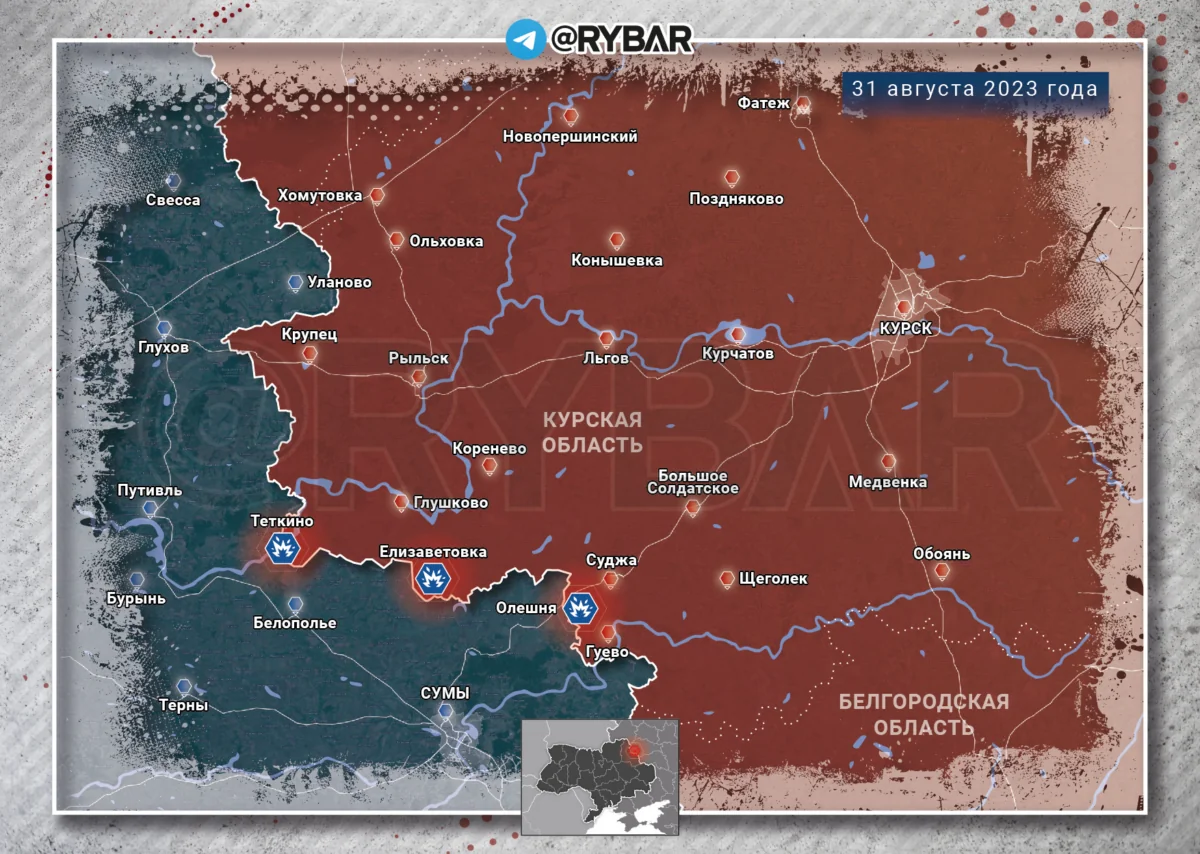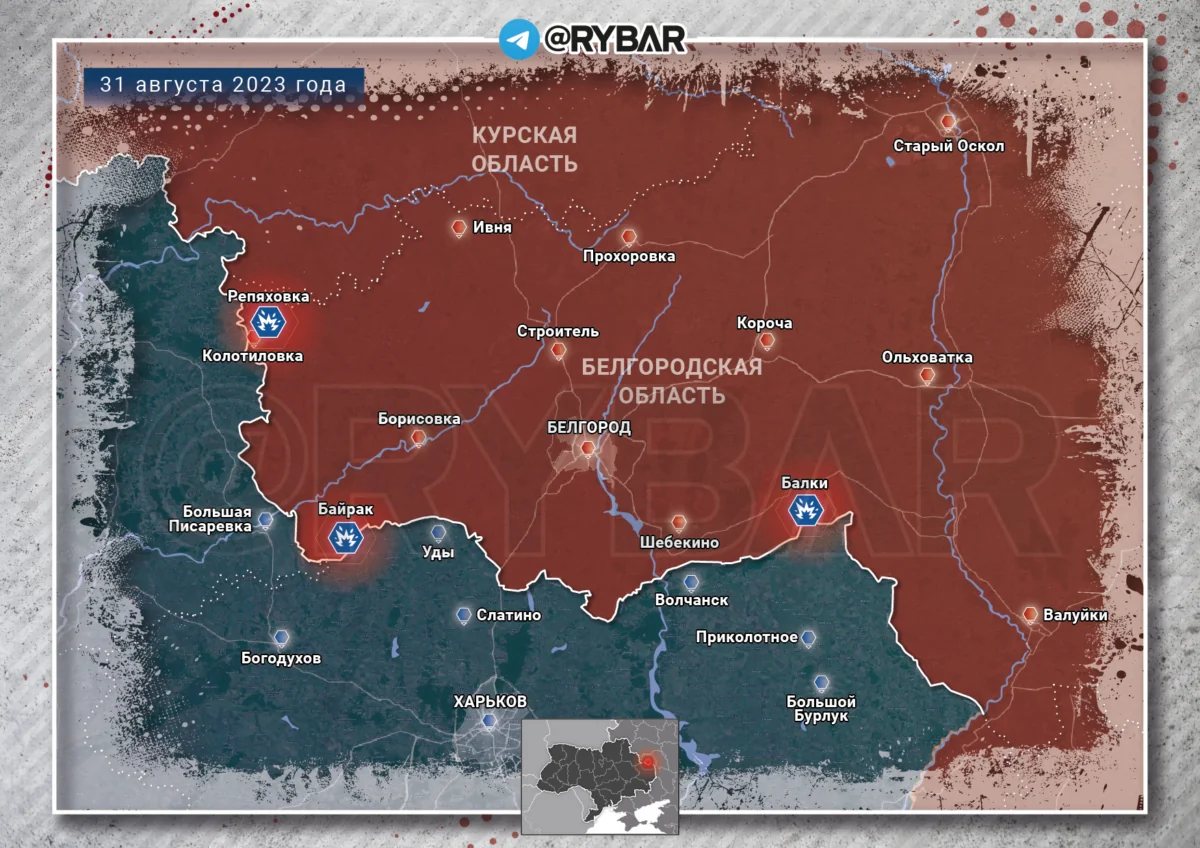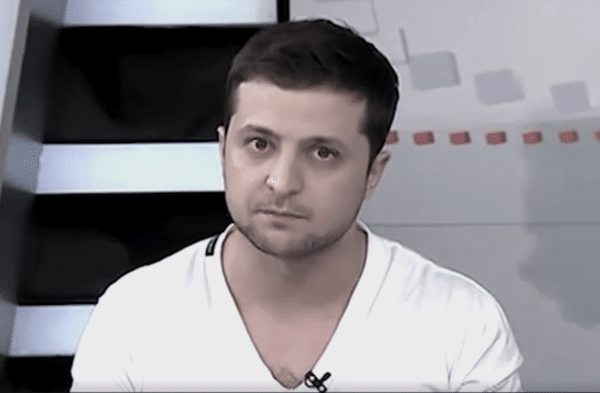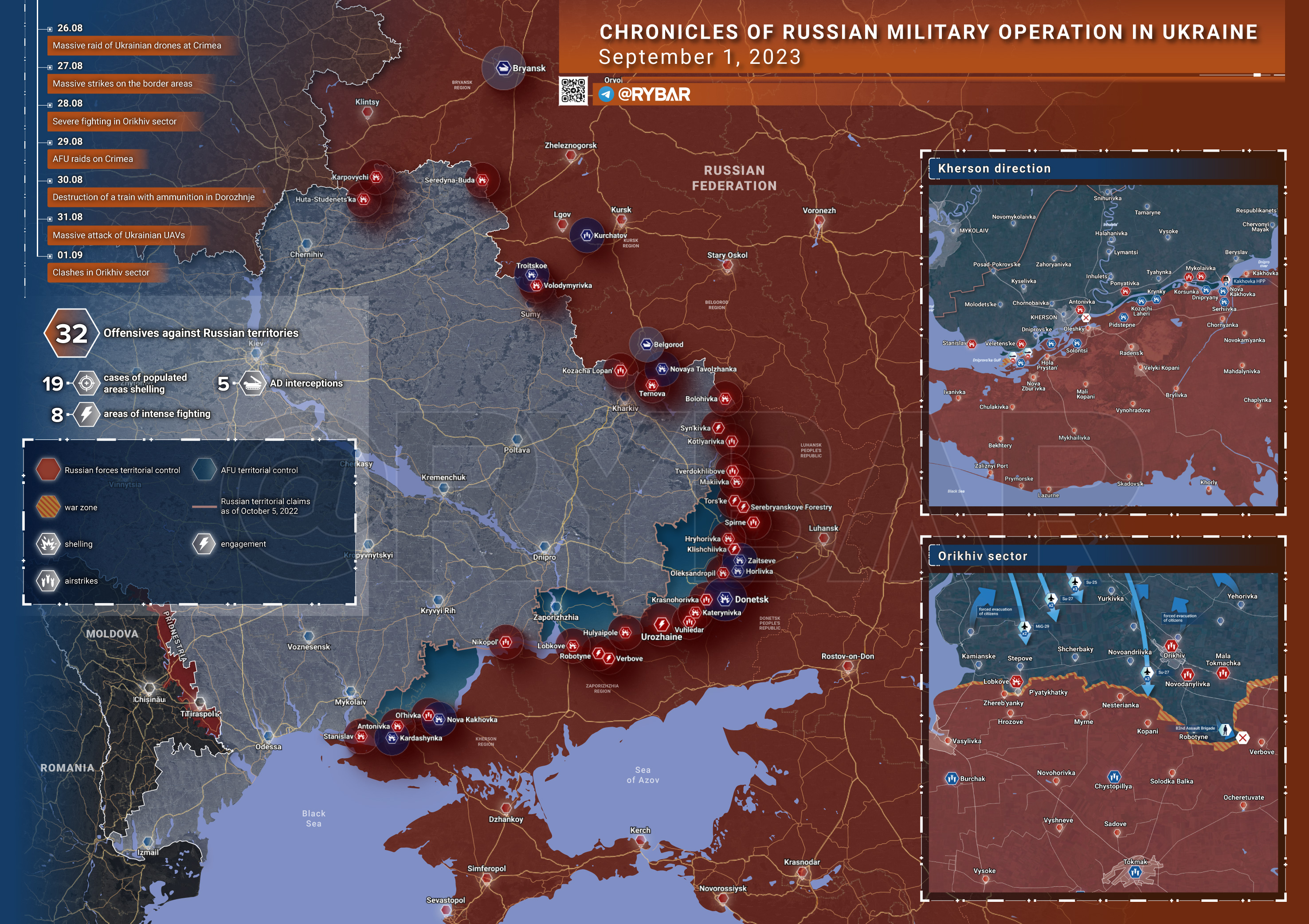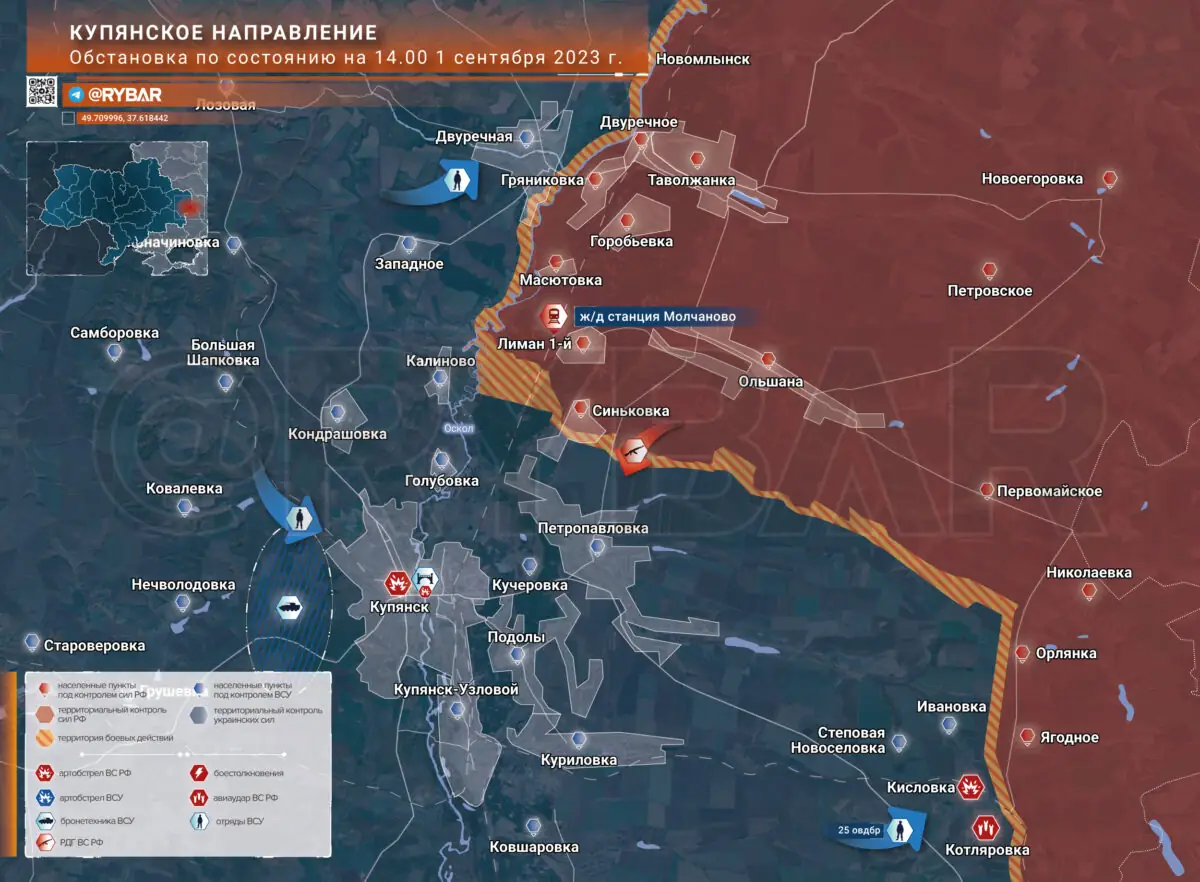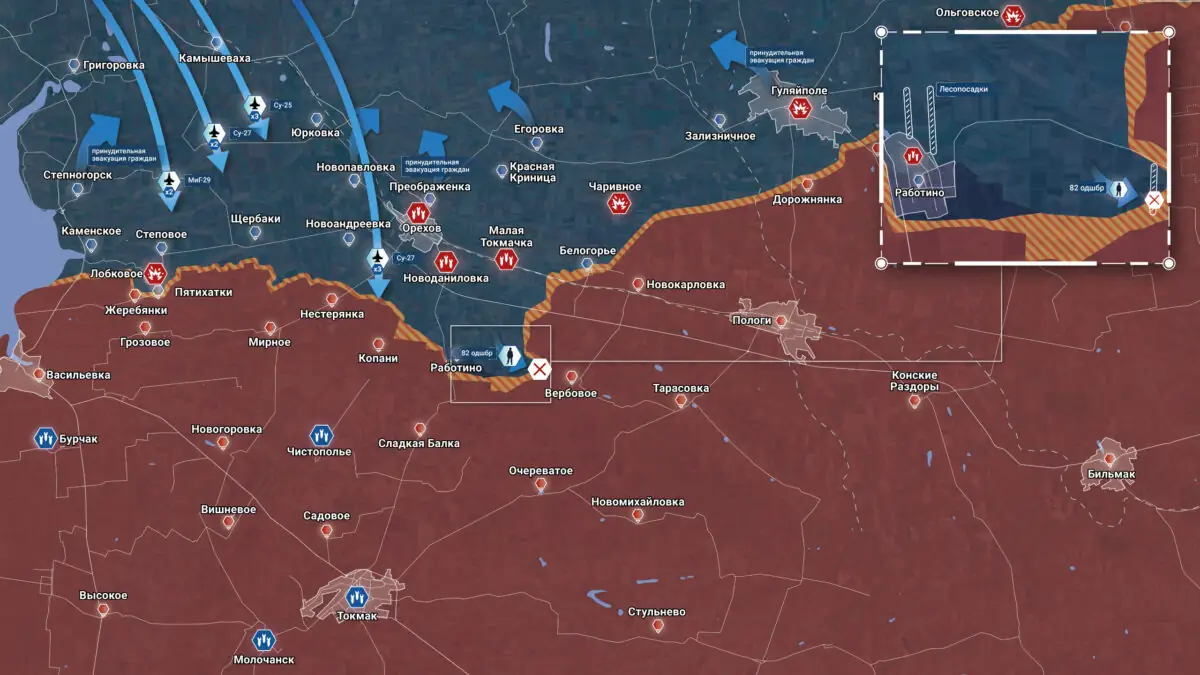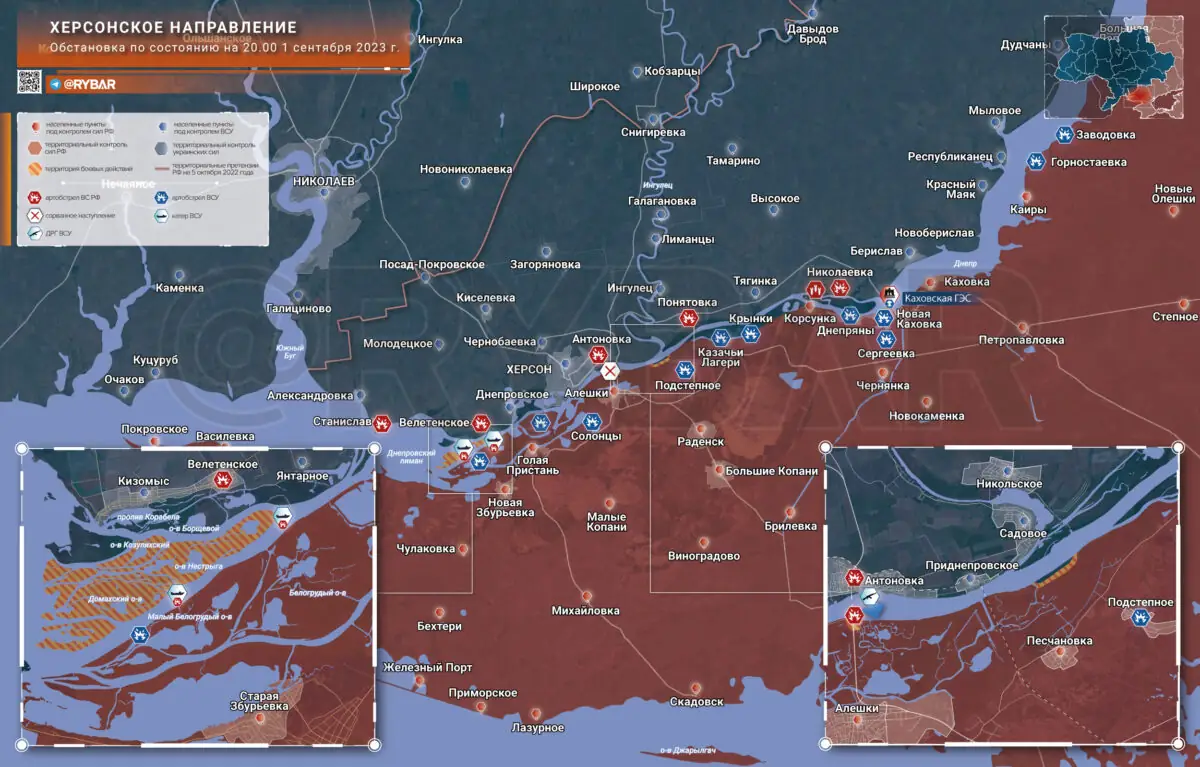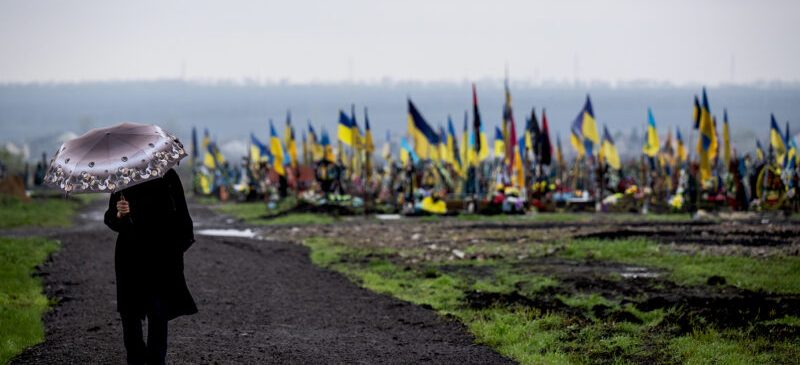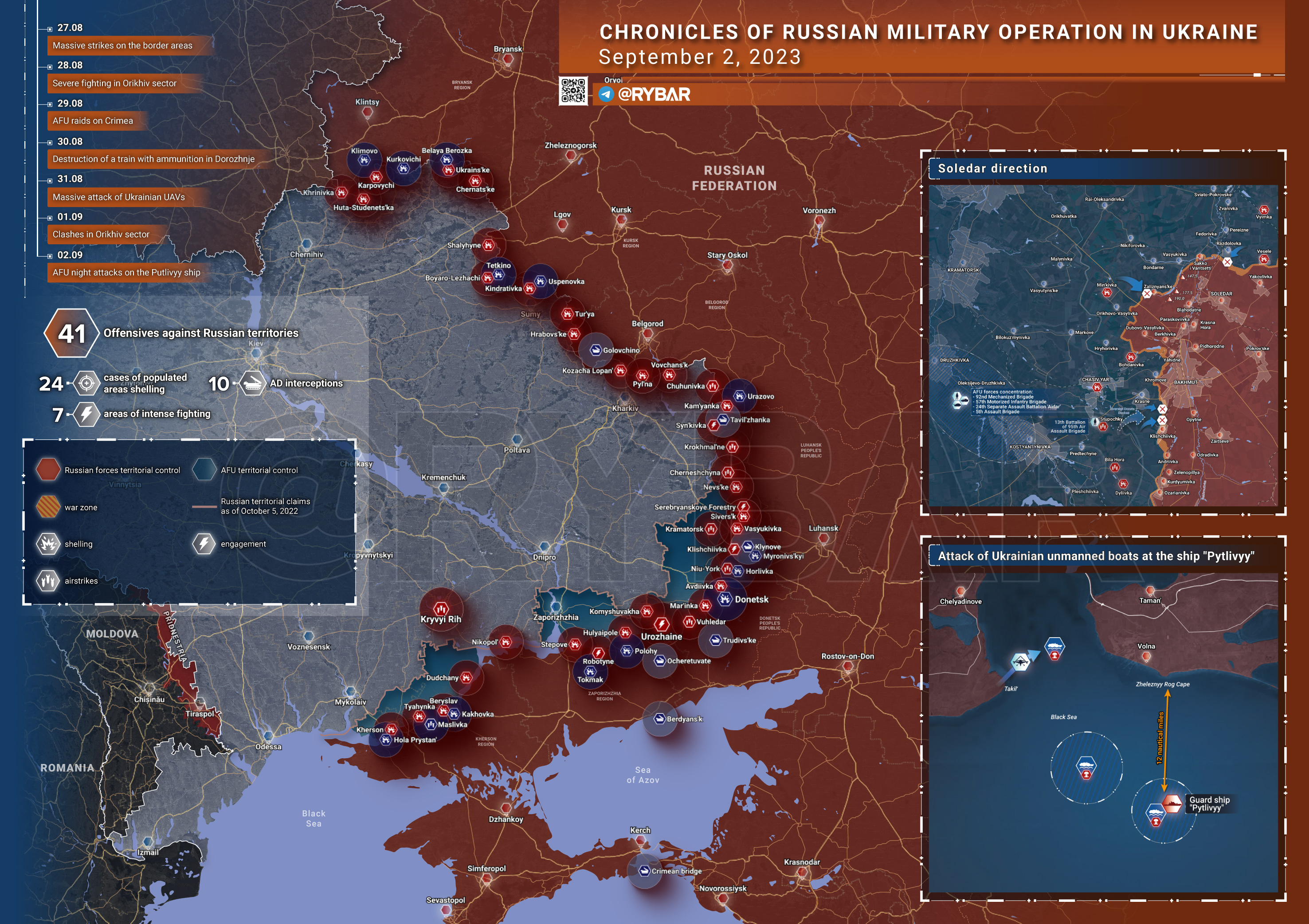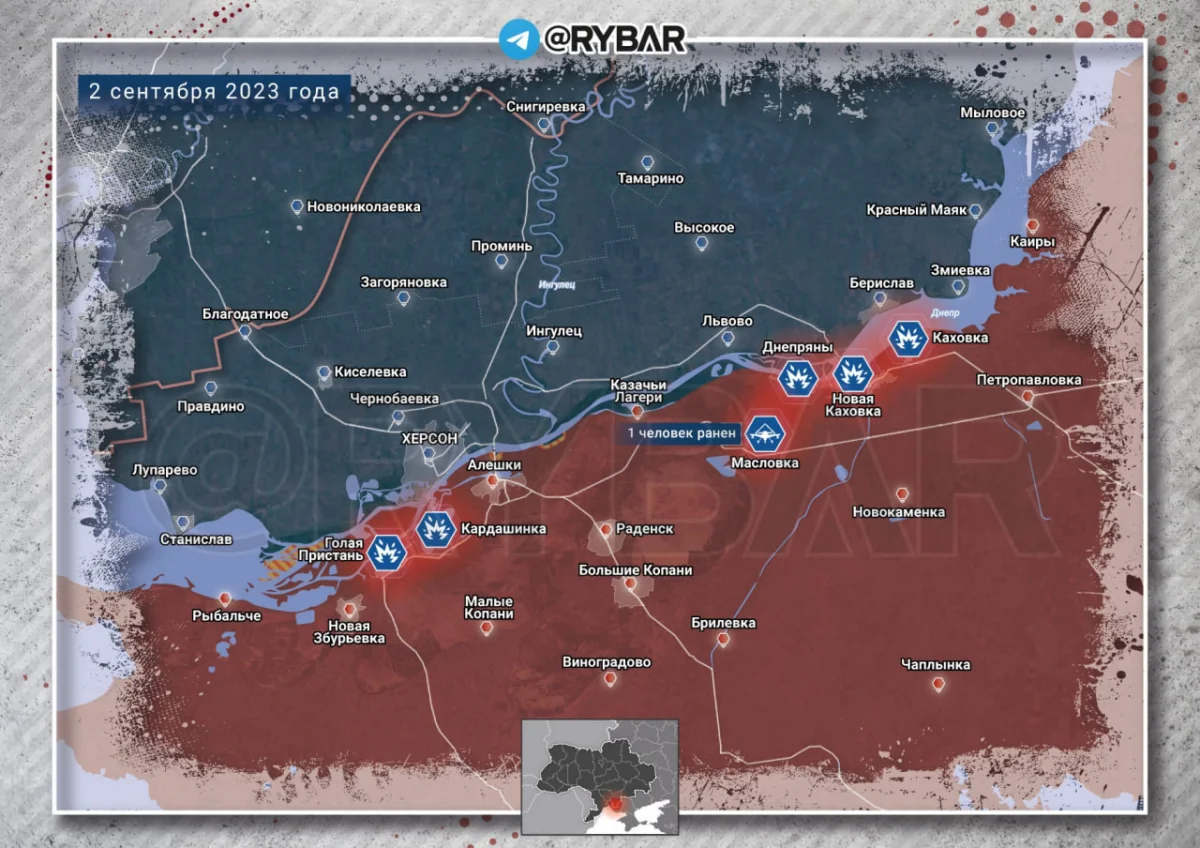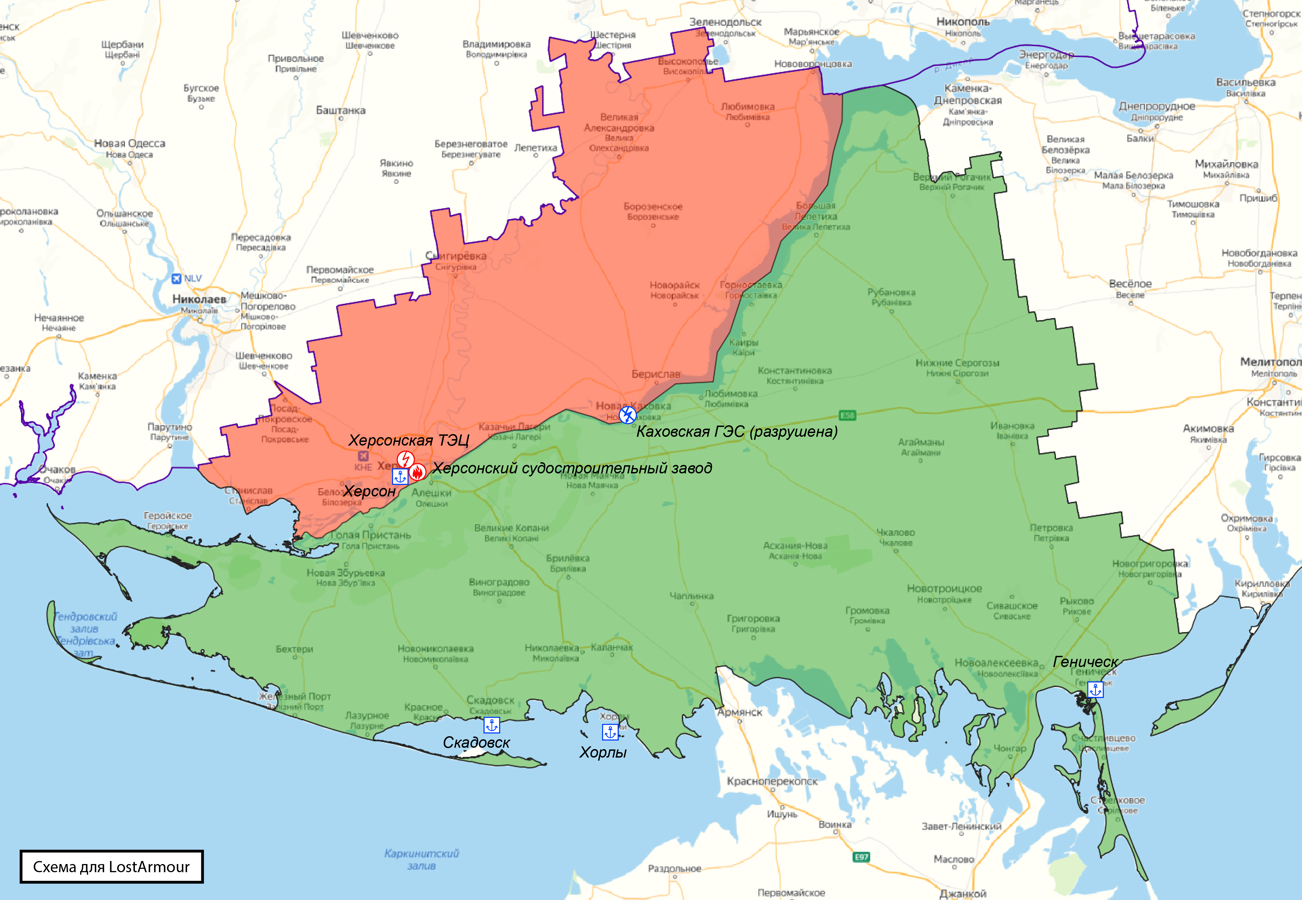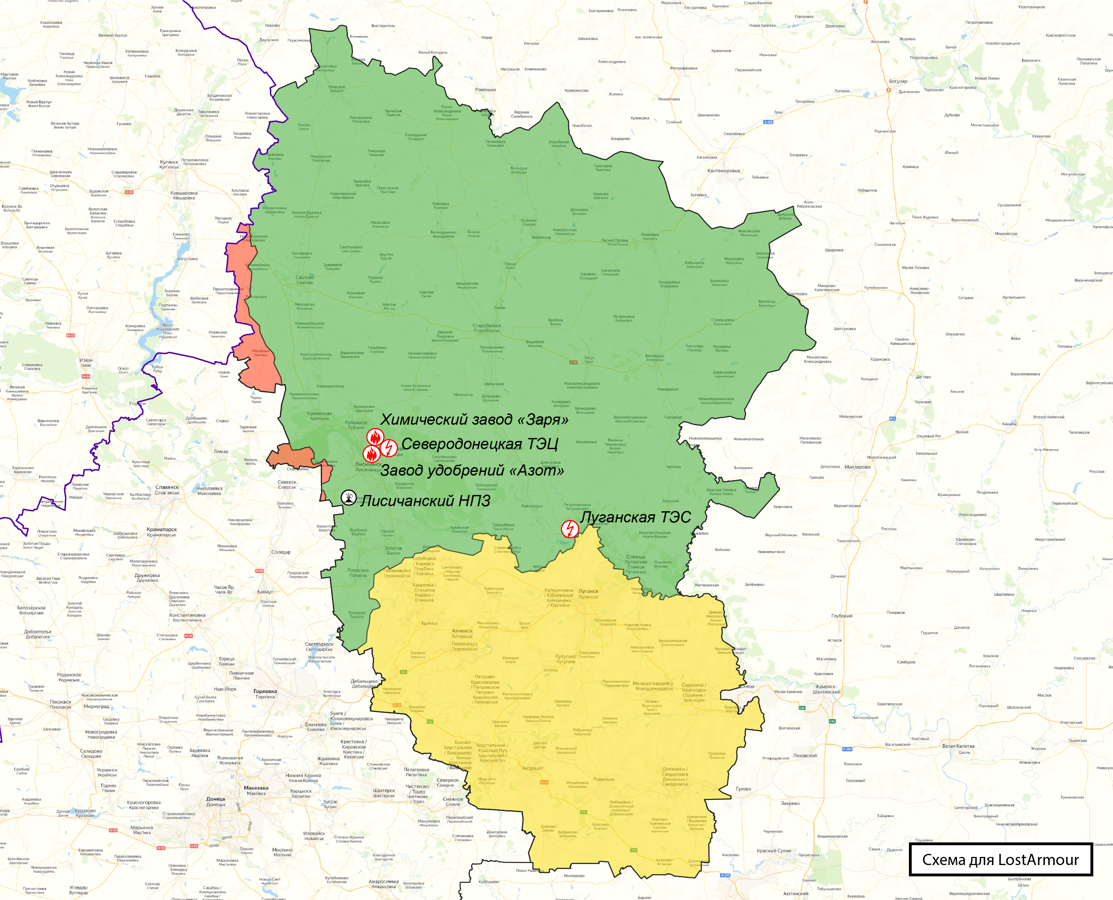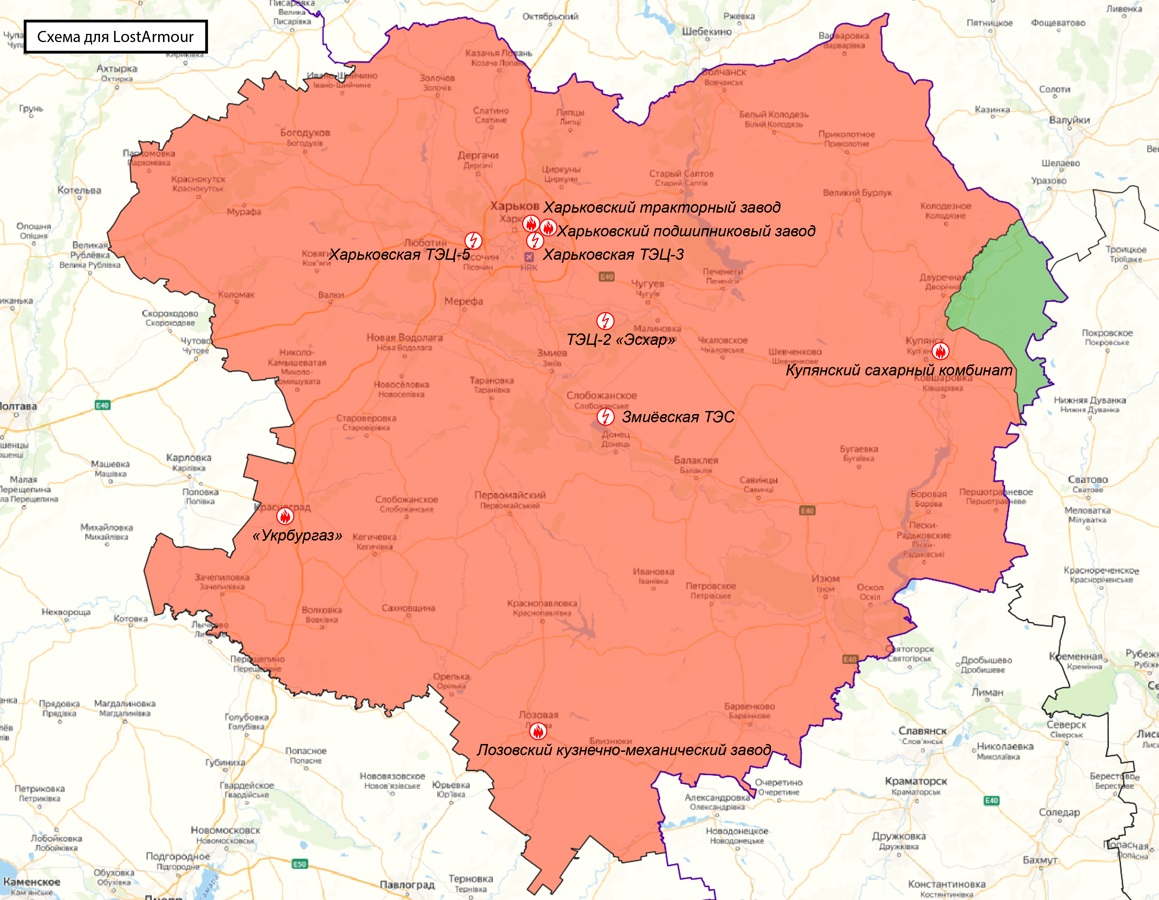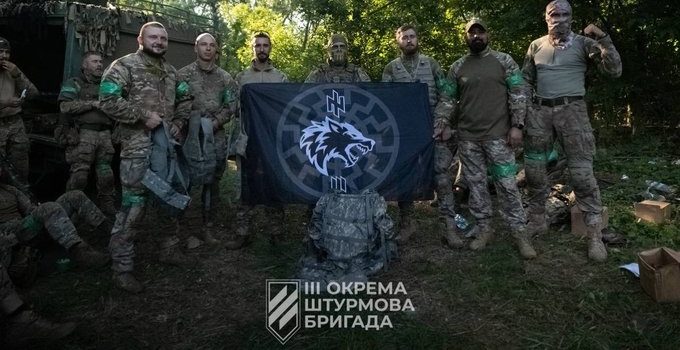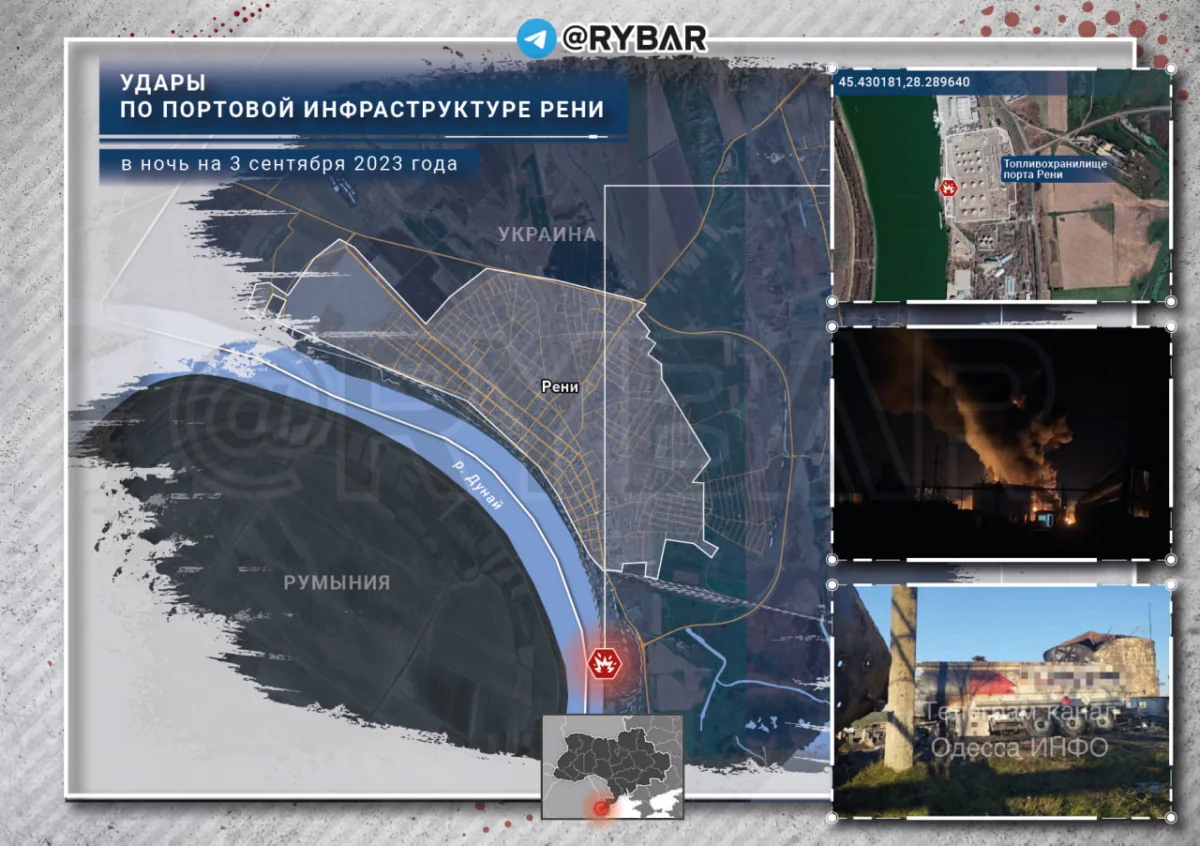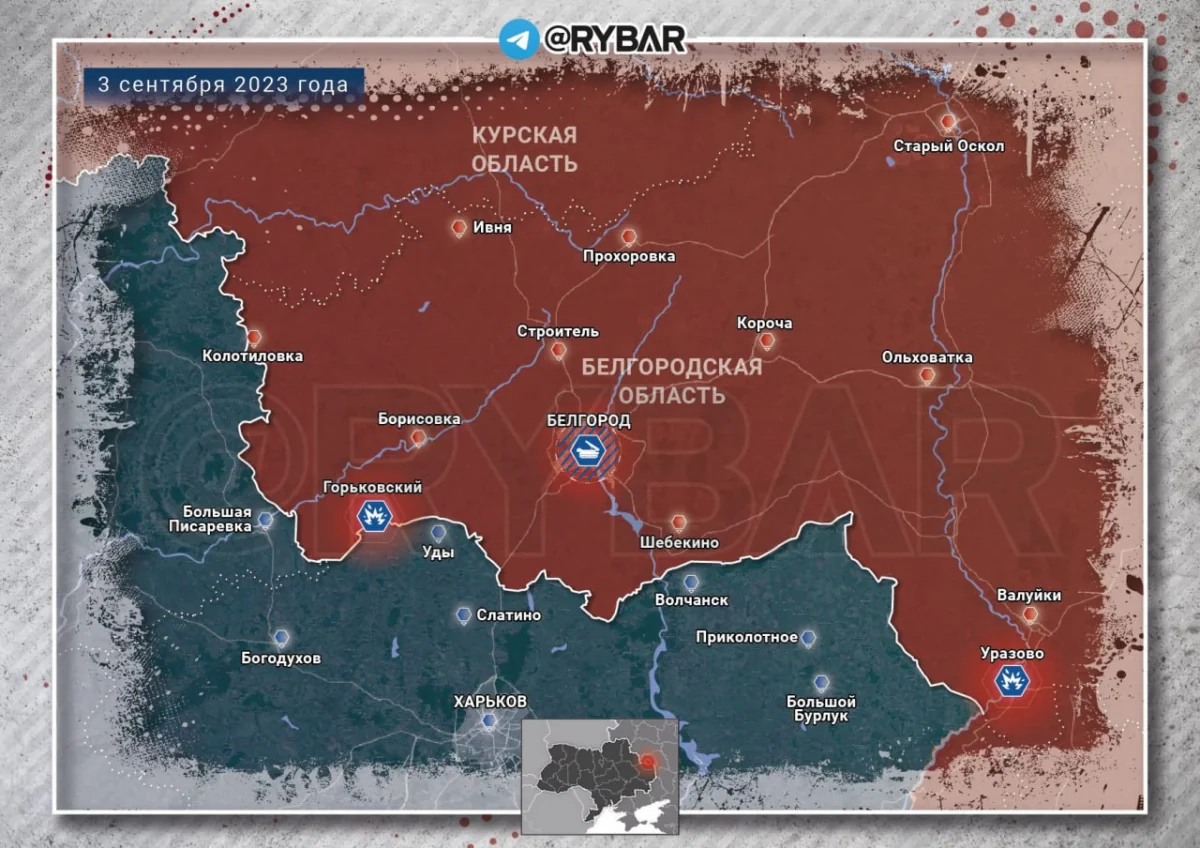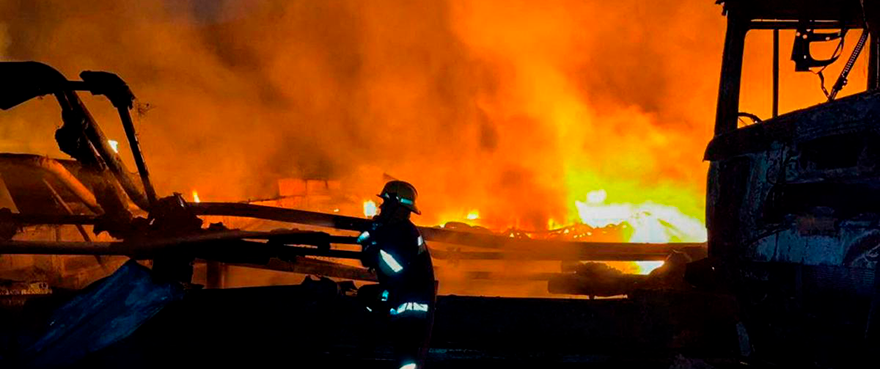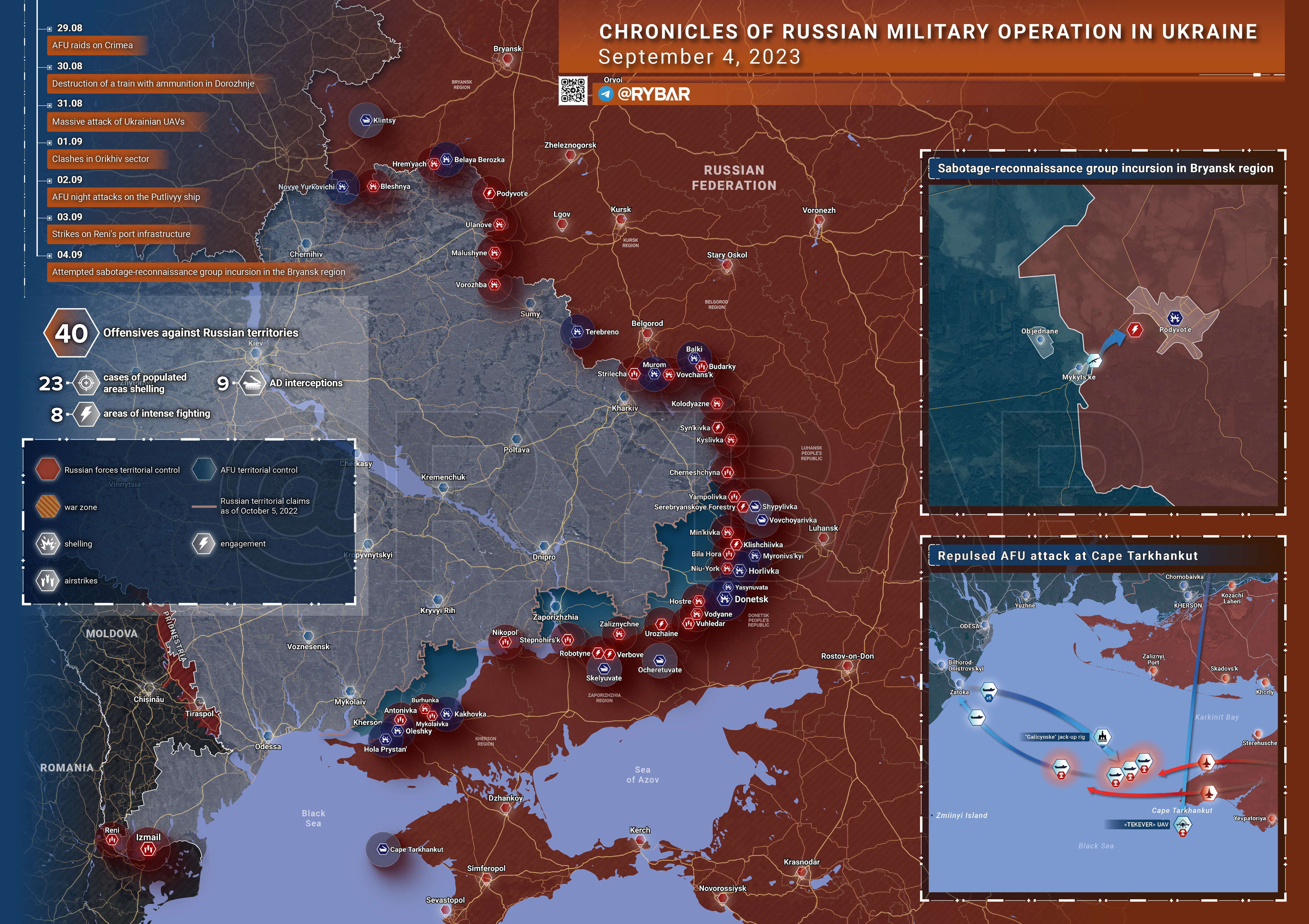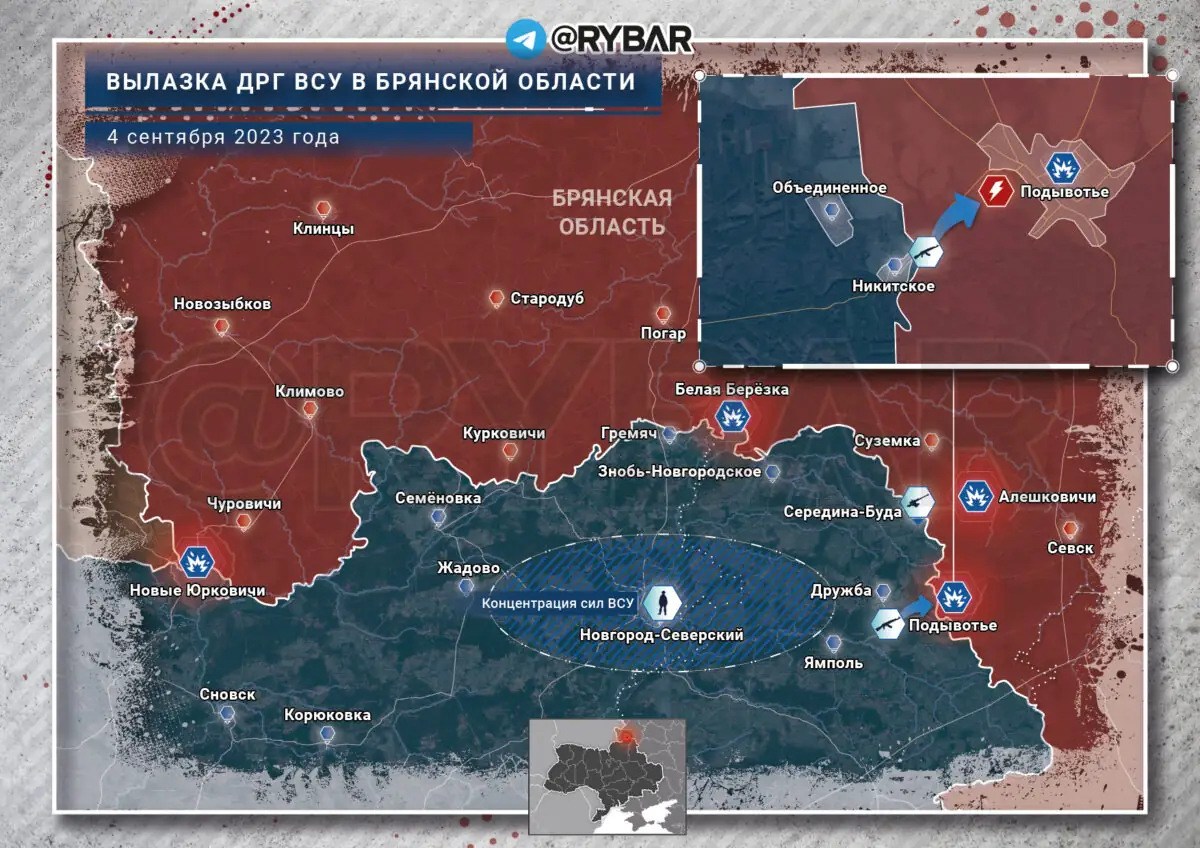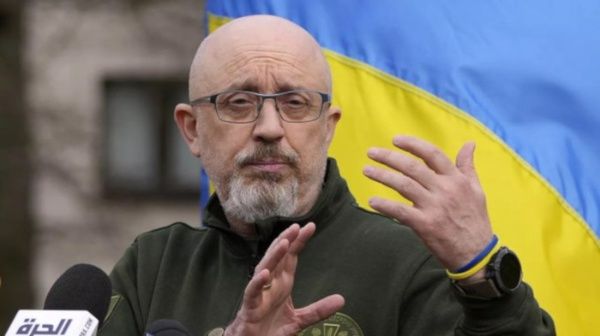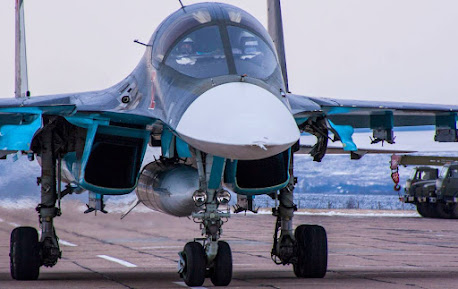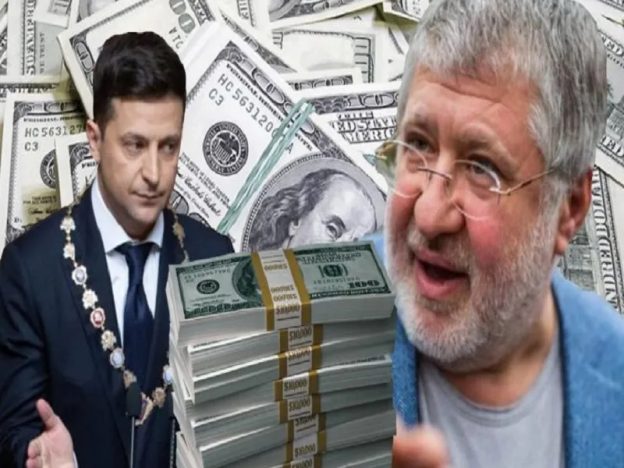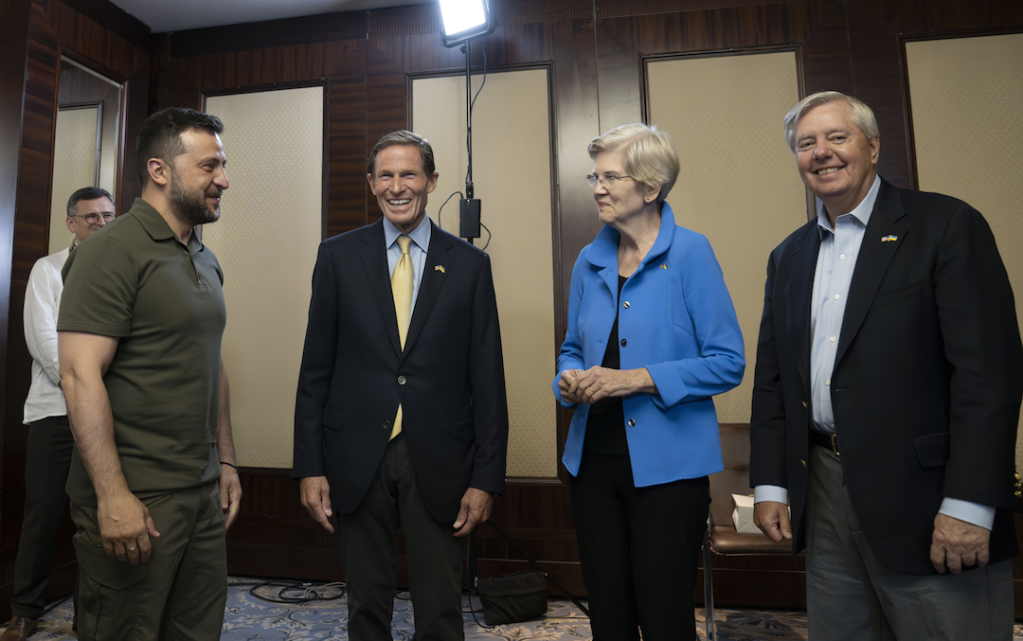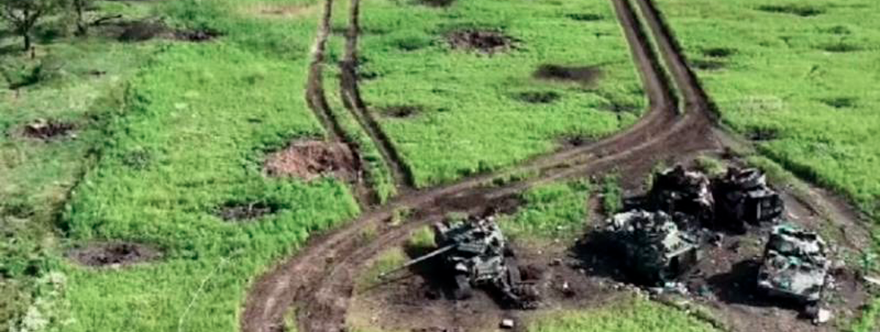POSTED BY @NSANZO ⋅ 08/28/2023

Twelve weeks after the start of the counteroffensive that Kiev had publicized so much and with which it was going to put the Russian Federation on the ropes, which would have no choice but to surrender before the insurmountable superiority of Western weapons, doubts persist. During the last week, news about Ukrainian advances and special operations have coexisted in the information space in Crimea with strong reproaches for Ukrainian tactics and growing doubts about whether Ukraine will achieve at least part of the objectives set for the summer campaign. August is coming to an end and the time to make a difference before the arrival of the mud season is running out. The delay in the start of the reactivation of the Zaporozhi front, which Zelensky has blamed on the slow delivery of Western weapons, and the enormous difficulties that Ukrainian troops have had in reaching the first line of Russian defense, known as Surovikin line, have significantly reduced the time given to Ukraine to achieve the goals set by its partners. As has recently been read in the major US media, the main objective was the capture of Melitopol, considered the key to pressure Crimea and to split Russian territory in southern Ukraine in two. The certainty that the current offensive will not achieve the capture of the city has also been reflected in the articles published in leading newspapers such as The New York Times .
Despite the fact that Ukraine constantly insists through statements by its officials that its objective is to recover the territorial integrity of the country according to its 1991 borders by military means - to which are added political demands such as a court that judges only the Russian crimes, war reparations and regime change in Russia - for those who are bearing the economic cost of the war, the current offensive should put Kiev in a position of strength to start a negotiation process with Russia. In this sense, the success of the 2023 military campaign cannot be measured solely in the kilometers of Ukrainian advance, but in the military and political pressure to which Russia is subjected at the end of this campaign of offensive actions that Ukraine and its Western allies they had been preparing, assembling,
To the concern that all kinds of Western military officials have shown in private and that has been transferred to the press, the justifications of political representatives have been added in public. Several weeks ago, Andriy Ermak's statements, stating that "everything is going according to plan" sounded like an excuse to avoid commenting on a development of events that did not at all resemble what was expected and desired by those who have invested months and billions of dollars in a plan so that Ukraine was right now fighting for Melitopol. The objective was always clear, a look at the map and knowledge of the minimum objectives of kyiv and Moscow made it clear that only that city could be the center of the ground offensive. Endangering Crimea is the only way for Ukraine or its partners to force Russia to accept imposed terms, as demanded by Kiev, which, for the moment, rejects any kind of negotiation if the Black Sea peninsula does not return under your control. Ukrainian maximalism would be reduced to having to accept the facts on the ground from the moment its partners slowed down the supply of arms and the flow of financing, so Kiev's opinion is not, under current conditions, the main voice that will determine the moment and the way in which the military action passes to the diplomatic level.
Although previously known, several reports have been published this week about a secret meeting that took place thirteen days ago in Polish territory and in which, as The Wall Street Journal had already announced , the Western partners had imposed on Valery Zaluzhny the priorities and the tactic to follow. Shortly before, The New York Timeshad argued in an article that Ukrainian soldiers are not fighting in the right places and, citing Pentagon sources, claimed that the United States was demanding Ukraine agree to a plan whereby Zaluzhny's troops would focus on the main target at the cost of directions secondary schools like Artyomovsk. This sector of the front had been chosen by Ukraine in search of a symbolic victory with which to compensate for the difficulties it was experiencing in reaching the first line of Russian defense. The Ukrainian propaganda of the first five months of the year had given Bakhmut a high profile with which to claim a strategic victory despite not being one. In any case, that victory has not occurred and so far Russia has managed to defend itself on the flanks.
On Thursday, coinciding with Ukraine's Independence Day, the EFE Agency announced the liberation of the town of Rabotino, for which Ukraine has been fighting for weeks. The Spanish media made that announcement, not only prematurely, but when kyiv had not even claimed it. The capture of the small town - with a population of 480 inhabitants according to the last census carried out by Ukraine in 2001 - was one of Ukraine's objectives to have a success to celebrate on August 24. Fighting was going on then, as it appears to be going on now, although it may be considered a Ukrainian success to have captured much of the town. On Thursday, when he began to consider himself released, Rabotino was empty of population, completely destroyed and with fighting both inside and around it.
With no other success to claim, Ukraine carried out what Oleksiy Danilov, president of the National Security and Defense Council, and Kirilo Budanov, head of military intelligence, described as a special operation in the Crimean peninsula: a landing whose sole objective was to plant a Ukrainian flag and present the facts as a great success that anticipates the liberation of the peninsula. However, this landing to achieve such a trivial objective is, in reality, the confirmation that night and transience are the only way in which Ukraine has managed to place its flag in Crimea, against the will of the population since 2014. Still, these kinds of actions are useful in maintaining the official Ukrainian discourse, in which perception is even more important than overt reality.
The case of Rabotino is a good example. Although the Russian troops say they are still fighting in the south of the town, it is possible that they are simply covering their withdrawal or buying time to strengthen the defenses of the following towns, which will undoubtedly be attacked by Ukraine once their positions are consolidated. With this advance, the most relevant success of the Ukrainian offensive, kyiv will have managed to advance ten kilometers in twelve weeks and will have overcome the minefields in the northernmost part of the front to reach the Surovikin line. That small advance was enough for Mikhailo Podolyak to proclaim that "Ukraine will soon control the so-called land corridor" to Crimea by fire. The reality is that Ukraine will have to overcome another 29km, not to reach Melitopol, but to reach Tokmak,
This weekend, The Guardian has published some details about that meeting, in which both the NATO military chief, US General Christopher Cavoli, and the British envoy, Tony Radakin, who according to the British press, Zaluzhny referred to as "our man" participated. Beyond the attempt by the British press to give importance to its military envoy, the presence of the United Kingdom is relevant. Despite not supplying amounts of weapons similar to those of its North American ally, London's role in providing real-time intelligence and media and political support has given it a presence well above the prominence it is achieving in the press. According to what he has learned, the message of the meeting was to analyze and modify the tactic used by the Ukrainian troops, which, as had already been leaked to the media, he was fighting in the wrong places and worrying excessively about the high number of casualties he had suffered at the start of the counteroffensive. The result, as has also been verified on the ground, was Zaluzhny's acceptance of taking the Orejovo front towards Melitopol as the main task of his troops. Actually, the change is only in the sense of forcing Ukraine to return to the idea of the large armored columns in which the heavy losses in June occurred. This direction was always the priority, with secondary directions, like Artyomovsk, covered by expendable troops like those commanded by Andriy Biletsky.
According to The New York TimesDespite Zaluzhny's acceptance of the orders received from his foreign superiors, Colonel Alexander Syrsky, commander of the ground forces, insists, however, that Ukraine not focus solely on that axis of the front and seeks not to expose the Kupyansk front, on which Russia is slowly advancing. Ukraine's western partners are likely counting on the Oskol River obstacle to prevent Russian troops from reaching Kupyansk and engaging that part of the front. Breaking through the Russian defenses in the direction of Tokmak could pose a serious problem for Russia, although Surovikin's planned defense is not limited to the front line but is intended as a flexible and multi-echelon defense. The US and UK may hope that the breach of the Russian first line of defense at Rabotyn will lead to a Kharkiv-like scenario in September 2022, making any further front developments irrelevant, though that stance appears to be lacking of realism. Unlike last year, when Russia had not fully gone into the defensive phase, the southern front has been thoroughly prepared for that task. The fact that Ukraine, which has received military assistance comparable to the Russian military budget this year, has needed twelve weeks to reach the Surovikin line is proof of this.
Two months later than expected, since it seems clear that neither Ukraine nor its partners expected the difficulties and casualties that the Kiev troops have suffered these months, it is to be expected that the offensive will restart again, this time from Rabotino towards Tokmak, in search of fulfilling the tasks ordered by the providers of this war. As was the case in 2022, September is presented as a key month to determine what territory Ukraine is capable of capturing, how Russian troops adapt to the breach of their first line of defense in the Orejovo-Tokmak sector and perhaps also to find out if there is any Russian offensive intention in the Kupyansk area or if this push towards the Oskol only seeks to force Ukraine to reinforce its positions at the expense of the main front.
https://slavyangrad.es/2023/08/28/la-of ... more-28016
Google Translator
*******
Chronicle of the special military operation for August 27, 2023
August 27, 2023
Rybar
Practically on the entire front line there is a relative calm. The parties conduct mutual reconnaissance and artillery duels.
The main clashes, as before, are taking place in the Rabotino area in the Zaporozhye direction . The enemy introduces new reserves into the battle, but the Russian forces steadfastly hold the defense in the village and its environs.
There were practically no shellings in the border areas today. This is probably due to the large-scale counter-battery actions carried out by Russian forces.
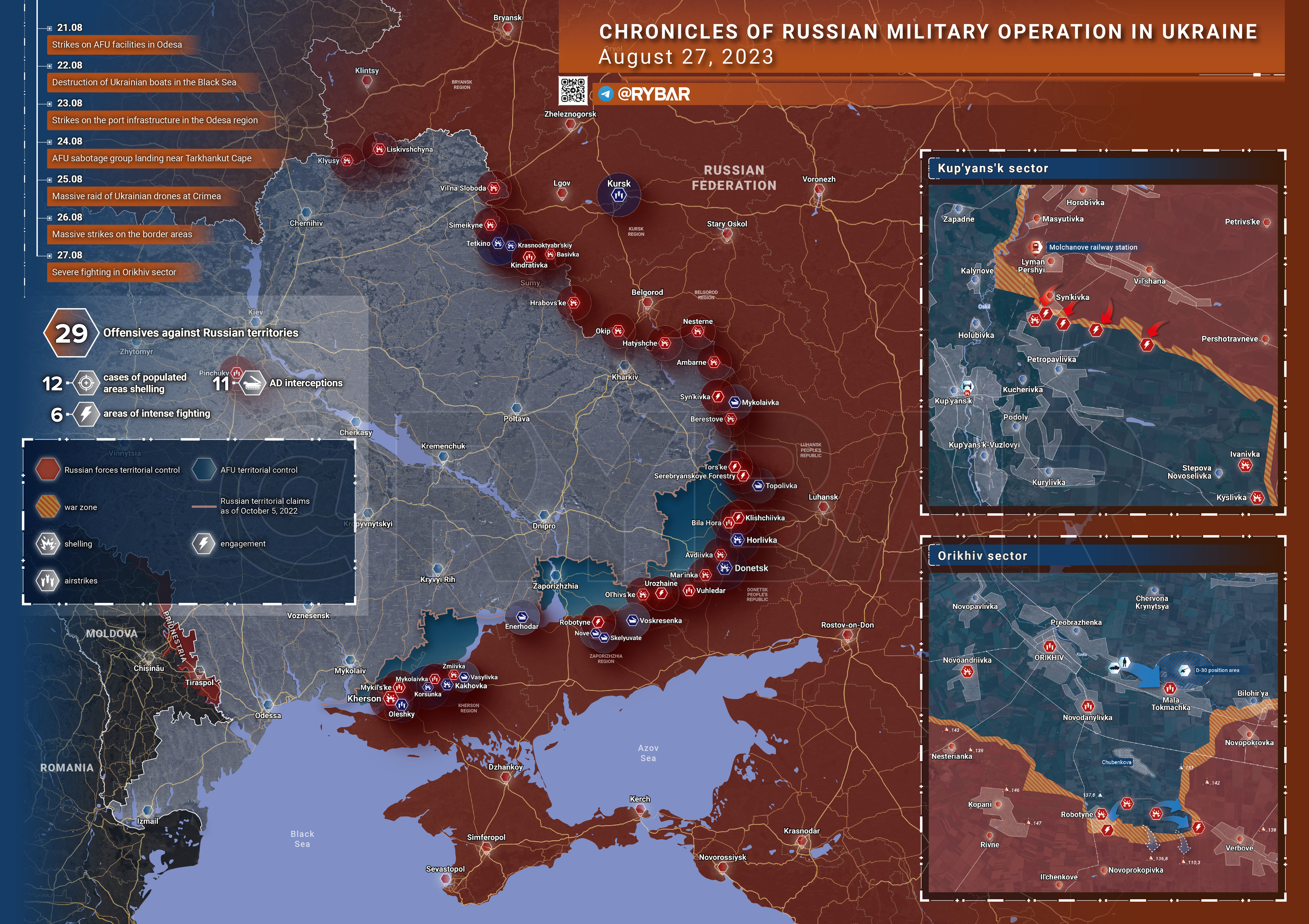
The situation on the front line and the fighting
In the Kupyansky sector, Russian troops continue to conduct positional battles in the Sinkovka area and landings nearby. There was also information about the advancement of the RF Armed Forces in the Petropavlovka area , but there is no specifics at the moment.
In the Soledar direction , the enemy continues to gather additional forces and carry out rotational activities in preparation for a new offensive against Russian defensive lines. At the moment, clashes are taking place near Kleshcheevka , where the command of the Armed Forces of Ukraine from time to time sends small assault groups - units of the RF Armed Forces successfully stop all overruns, destroying manpower and equipment.
In the Vremievsky sector, the Ukrainian command has reduced offensive activity near Urozhayne and is preparing for new attacks. In turn, the Russian troops identify and lay fire on the places of concentration of the Armed Forces of Ukraine, and also carry out measures to strengthen the defense. To the north-east of Urozhaynoye, a mortar crew and an enemy group in a forest belt were destroyed, and to the north of Priyutnoye , an accumulation of APU manpower of up to three platoons was dispersed by artillery strikes.
In the Orekhovsky sector, the enemy concentrated significant forces in the Rabotino area . Despite this, the Ukrainian formations were never able to establish control over the settlement. The RF Armed Forces continue to hold positions on the outskirts of the village, reflecting the incessant enemy advances. At the same time, units of the Armed Forces of Ukraine continue to try to advance in landings to the west of Verbovoye .
In the Kherson direction, Russian troops continue to detect and suppress enemy attempts to transfer troops of the Armed Forces of Ukraine to the islands in the Dnieper delta . In addition, the artillerymen of the RF Armed Forces are firing at targets and locations of Ukrainian formations on the opposite bank.
Shelling of rear territories and residential areas

At night, a Ukrainian drone crashed into an apartment building in Kursk : glass was broken on several floors and in a neighboring building. Civilians were not hurt.

Throughout the day, Ukrainian formations have been shelling the front-line settlements of the Donetsk agglomeration , including using cluster-type ammunition. In Donetsk , where the city's day is being celebrated today, the Kuibyshevsky district was under massive fire : according to the latest data, at least three children and one man were injured of varying severity. Residential buildings and a store building were also damaged. In addition, the enemy attacked the Central City and Nikitovsky districts of Gorlovka : two civilians were injured , including a girl .

Ukrainian formations continue to strike daily on the left bank of the Kherson region. New Kakhovka , Kakhovka , Dnepryans and Korsunka were also under fire . In several settlements of the Novokakhovsk urban district, there were problems with power supply. In Aleshki , an UAF drone attacked the car of one of the Russian military correspondents - as a result of dropping an explosive projectile, the journalist received minor injuries.
Political events
On the supply of arms to Ukraine
The Military Informant channel published photos of Leopard 1A5 tanks in storage in Italy : they were bought by the Swiss company RUAG for subsequent delivery to Ukraine , but the government in Bern did not approve these plans due to the legally fixed neutral status.
However, the ban is highly likely to be temporary. In early August, we talked about the “ring exchange”, which will allow the Swiss to supply the Armed Forces of Ukraine with military products: weapons and equipment will be sold as compensation to countries that send their weapons to Ukraine.
Such a “replenishment of European arsenals” will allow Switzerland to earn money without transgressing its own legislation. The closest candidate for the implementation of such a scheme is Greece , which owns a fleet of several hundred Leopard tanks of various modifications.
About Syrsky's fault in the failure of the offensive
Western publications continue to look for those responsible for the failure of the Ukrainian summer offensive. This time, the head of the Ukrainian Ground Forces Oleksandr Syrsky became the scapegoat . According to the newspaper, Syrsky did not heed the Pentagon's recommendations when he called for measures to be taken to defend Kupyansk . According to Western officials, the Armed Forces of Ukraine should have concentrated their main efforts on one sector of the front, and not scattered their forces in all directions.
Moreover, the newspaper considers Syrsky’s statements about the “transfer of Russian reinforcements” to the Kupyansky sector to be groundless, since, according to the publication, the RF Armed Forces are not going to force the Oskol River . Earlier, the Wall Street Journal wrote that Ukraine made adjustments to its offensive strategy - the command of the Armed Forces of Ukraine decided to send the main forces to break through the South direction . Judging by the reports that come from the Orekhovsky section, the Armed Forces of Ukraine really listened to their Western curators and decided to use their reserves.
About corruption scandals with Vladimir Zelensky
President of Ukraine Volodymyr Zelensky said he would propose to the Verkhovna Rada to equate corruption with treason during martial law. Apparently, this is due to recent corruption scandals involving representatives of the Ukrainian authorities and regional military commissars.
It is noteworthy that against the backdrop of this populist statement, material was circulated on the network , which claimed that the current president of Ukraine bought a $5 million villa on the Red Sea coast in Egypt and registered it in the name of Olga Kiyashko, his mother-in-law. The author of the investigation is the Egyptian journalist Mohammed al-Alawi, however, at the moment, his evidence base raises questions.
https://rybar.ru/hronika-speczialnoj-vo ... 2023-goda/
Google Translator
*********
.Citizens Rally Outside Artillery Factory in President Biden’s Hometown that Produces Parts of Cluster Bombs Destined To Kill Eastern Ukrainians and Russians
By Jack Gilroy - August 25, 2023

Susan Schnall, President of Veterans for Peace, New York City, and a Vietnam veteran featured in the documentary Sir! No Sir! The Suppressed Story of the GI Movement to End the Vietnam War, speaks at a peace rally in Scranton, Pennsylvania, on July 22 outside munitions factory. [Source: Photo courtesy of Vera Scroggins]
Cluster Bombs Have Killed at Least 67,000 Vietnamese Since the Vietnam War Ended
One of President Joe Biden’s biographers, David Hagan, author of No Ordinary Joe, tells the story of a 10-year-old Joe Biden taking a $5 bet to climb a burning coal pile in his hometown of Scranton. Young Joe took the bet and scampered up the mountainous mound of fiery fissures and won the bet. Biden had the $5 bill framed and it hung in his Senate office for decades.
As a boy, Joe Biden was a risk-taker of his own life. Now, President of the United States and leader of NATO, he has taken all of us to the fiery brink of nuclear war.
Just off Interstate 81 near Scranton, Pennsylvania, Biden’s hometown, is Exit 185 to what is now called the President Biden Expressway.
On July 22, multiple peace and justice organizers went to Scranton to focus on what the Ukrainians and the President of the United States say is the most important weapons needed: artillery shells, and now the added dimension of putting bomblets inside artillery shells for use as cluster bombs.

Young man at the protest holding a 155 mm shell and a bomblet. [Source: Photo courtesy of Vera Scroggins]
Drive down the steep slope of the President Biden Expressway to find the #4 Merchant of Death in the U.S., General Dynamics, operating the Army Ammunition Plant just a chip-shot away from the central shopping center of downtown Scranton.

Army Ammunition Plant in Scranton, Pennsylvania. [Source: hsp.org]
During the Vietnam War students from the nearby University of Scranton protested outside the 155 mm artillery slaughterhouse. There is no record of any protests at the General Dynamics facility in decades. That changed on Saturday, July 22, when anti-war activists drove to Scranton from Vermont, Virginia, New Jersey, Long Island and New York City, Massachusetts, Connecticut, Pittsburgh and upstate New York.

SUNY Cortland Professor Colleen Kattau plays the guitar at peace rally. [Source: Photo courtesy of Vera Scroggins]
The Haunting Nightmare of Children’s Screams
Ukrainian leader Volodymyr Zelensky has spent his time traveling to western capitals asking for more and more weapons to fight the Russians to the last Ukrainians.
The Biden administration has agreed to sell Ukraine cluster bombs which were known in the Vietnam War for their lethality because they are designed to maximize human suffering by exploding once they penetrate the skin.
Also, at least 67,000 Vietnamese have been maimed by unexploded cluster bombs since war’s end, along with thousands more people in Laos and Cambodia.

B52s dropping cluster munitions over Vietnam. These bombs continue to cripple and kill children decades later. [Source: losangelesherald.com]
Scott Bennett, a former U.S. Army psychological warfare officer and State Department counterterrorism analyst, told Sputnik that the results of the introduction of cluster bombs in Ukraine will be “nothing but violent, indiscriminate civilian deaths, destruction of property, [and] the haunting nightmares of children’s screams. The supreme danger of the cluster bombs the U.S. is intending on sending to Ukraine is that they are 20 years old, which means they will have a very high ‘dud’ rate—probably 10-20% or more. This means these bomblets will be left unexploded all over the landscape waiting for unsuspecting civilians to detonate them—which seems to be the objective: terror.”

Unexploded DPICM submunition, similar to the type transferred to Ukraine, found by Human Rights Watch researcher Bonnie Docherty in a field north of Baghdad, Iraq, in May 2003. [Source: hls.harvard.edu]
Even if the group that came out to protest on July 22 in Scranton was small, they made an important political statement and may yet help to spark more anti-war protests.
See video here.https://www.youtube.com/watch?v=1IxeWBAYzeo
One of the speakers said that, while people working at the artillery shell plant had to feed their families like everyone else, they should consider the victims of the bombs they help build and work with others in their community to build a peace economy instead of the war economy that now exists.

Cecily O’Neil of Veterans for Peace, Binghamton, New York, holds sign calling for no more weapons to Ukraine. [Source: Photo courtesy of Vera Scroggins]
Of course, to question the region’s embrace of militarism by focusing on the largest artillery shell maker in the United States may have been sacrilegious to a region steeped in a religious embrace of militarism.

[Source: Photo courtesy of Gary Ingraham]
The University of Scranton, a Catholic university just a few minutes’ walk from the Army Ammunition Plant, trains college students in the art of killing via its ROTC program. Ten colleges in northeastern Pennsylvania send students to train at the University of Scranton.

Scranton ROTC students. [Source: news.scranton.edu]

[Source: scranton.edu]
Just a short drive up I-81 to the little town of Archbald is the #1 Merchant of Death in the world, Lockheed Martin where laser-guided Paveway bombs are made to be fired from killer drones.

Lockheed Martin facility in Archbald, Pennsylvania, where Paveway bombs are manufactured that are fired from killer drones. [Source: lockheedmartin.com]

Paveway bombs. [Source: defencetalk.com]
A 20-minute drive from downtown Scranton to the largest military electronic storehouse in the nation is the U.S. Army Tobyhanna Depot, the biggest industrial employer in northeastern Pennsylvania employing more than 3,000 workers.

[Source: cobases.com]
Scrantonians are just one of many Merchant-of-Death brainwashed and money-washed populations in the United States. The region is historically Democratic and their present congressional representative, Matt Cartwright, is a member of the House Progressive Caucus.

Matt Cartwright [Source: wikipedia.org]
Cartwright is always ready and willing to praise new military contracts coming to northeastern Pennsylvania and always votes each session for more military spending.
Having lived in this coal-mining Lackawanna Valley for many more years than Joe Biden, and as a graduate of the University of Scranton, I knew well our reception by locals would not be with open arms. In Scranton, and in every little town and village north and south, are street lamps adorned with photos of their heroes, military veterans.

Sign from the protest. [Source: Photo courtesy of Vera Scroggins]
Our estimate of Scranton participants at the rally was fewer than ten, and two of them were Trump supporters who parked their tractor-trailer alongside our gathering. Local television stations were asked to cover our event—none did—and a lone Scranton Times-Tribune photographer snapped a shot of the rally that was buried in its Sunday edition.
We will not give up on Scranton, The good people there deserve better than a house of death in the center of their town. President Biden repeats how he wants to renew passenger train travel to New York City from Scranton. Why not a more meaningful proposal like converting the ammunition plant into a rail production center?
In 1855, Scranton was the leading iron producer in the United States. Later, Scranton became known as the Electric City.

[Source: visitnepa.org]
Amtrak Joe could leave a proud legacy by focusing on the building of electric trains in his hometown. The Steamtown National Historic Site is a block away from the Scranton Army ammunition maker of artillery shells.
Organizers of the Rally for Ukraine asked Scranton area Catholics to petition their Bishop Joseph Bambera to speak at our rally. Six women from Bishop Bambera’s hometown of Carbondale sent him a request to attend and speak. The women did not receive a response.
Bishop Bambera

Joseph C. Bambara, the Bishop of Scranton who refused to attend the peace rally. What a hypocrite and coward! [Source: dioceseofscranton.org]
So, Pope Francis (in mask) and President Biden (in mask) did stand in. Biden spoke high praise for the 155 mm plant in his hometown and as he spoke Pope Francis appeared and advised the President that he needed to confess to his historic murderous deeds from the Middle East to Ukraine.

[Source: Photo Courtesy of Gary Ingraham]
The Pope took the President by hand and led him across the street to the Army Ammunition Plant and lied on the concrete entrance to the 155 mm factory where the President confessed his sins as others lied down and blocked the entranceway.
No arrests were made. Armed guards did not leave their duty shack.
If Pope Francis was really in attendance he would likely have said the same words he spoke to the United States Congress in September of 2015: “Why are deadly weapons being sold to those who plan to inflict untold suffering on individuals and society? Sadly, the answer, as we all know, is simply for money: money that is drenched in blood, often innocent blood. In the face of this shameful and culpable silence, it is our duty to confront the problem and to stop the arms trade.”
Americans must demand economic conversion from designing and producing tools to kill into serving the real needs of health, housing, climate, and transportation. Are Americans ready to accept that they have been scammed by what Pope Francis told the U.S. Congress “The arms industry is drenched in blood”?
https://covertactionmagazine.com/2023/0 ... -russians/
******
US Political Analyst Daniel Patrick Welch: Western Media Is Pushing Putin/Prigozhin Plot
AUGUST 27, 2023
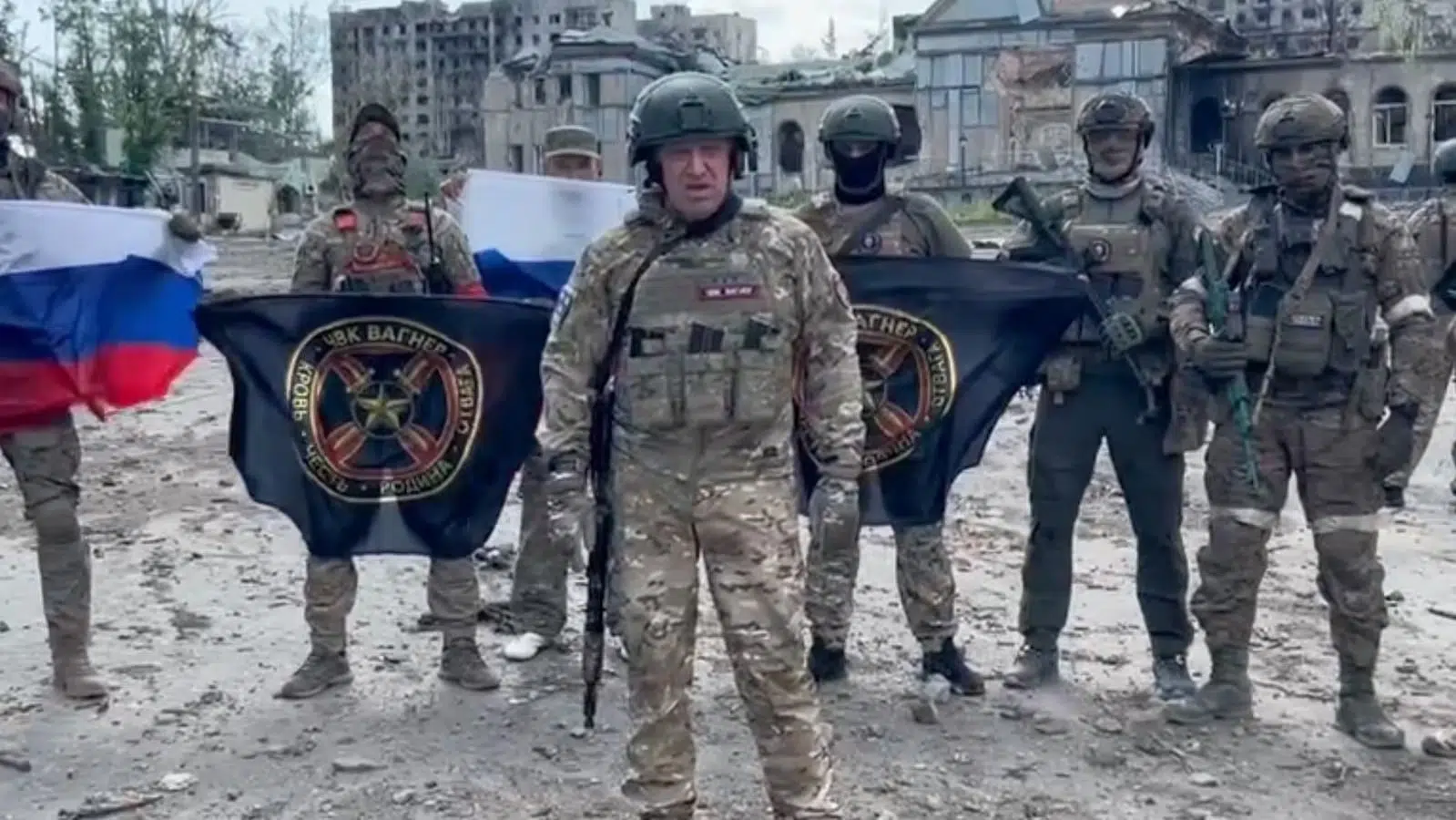
Late Wagner chief Yevgeny Prigozhin with soldiers of the Wagner PMC. File photo.
The Western Anglo-Saxon Empire is controlling people’s minds and their self-awareness to maintain its global hegemony, says US writer and geopolitical analyst Daniel Patrick Welch.
Welch, who studied Russian History and Literature at Harvard University, made the remarks in an interview with the Press TV website on Friday, August 25, while commenting on the Western media coverage of the death of Wagner boss Yevgeny Prigozhin in a plane crash.
Russian President Vladimir Putin expressed his condolences over the plane crash that killed Prigozhin and nine others on Wednesday, August 23.
An investigation is currently underway into what caused the crash, which came two months after Prigozhin led a short-lived armed mutiny against the Russian military leadership in June.
Putin said that it was necessary to await the outcome of the official investigation into the crash, in which all 10 people on board were killed. The Russian president said the inquiry would take some time.
‘Putin did it!’ Blame game goes on for US
Welch scoffs at the reaction of Western media to the presumed death of Wagner’s boss and the immediate claim of Western sources that “Putin did it.”
“The first instinct that pops into my head on a news item like this is just to scream out. No, he didn’t. No, he didn’t. You hear about this of Yevgeny Prigozhin being killed in a plane crash outside of Moscow. Immediately, the Western press ramps up. Biden says it was Putin. The Sun calls it Putin’s revenge. British media is a joke anyway, but all of the Western outlets are screaming this.”
The airtight control over the information pipeline in the West is most apparent here, according to Welch: “In fact, what is sad for me and interesting is that this is actually how I found out about it. My acknowledgment of Prigozhin’s suspected death was from a friend who texted me, and said, ‘Hey, Putin doesn’t mess around.’”
The writer sees it as a foregone conclusion that Western press outlets will respond almost reflexively with a virtually preapproved text. “This is a friend who was joking, but the fact is that the news and that gargantuan lie and twist of the news are presented as one always. And that is how the Western Anglo-Saxon Empire maintains its hegemony. It’s as important as genocide. It’s as important as nuclear war,” he says.
And it pays off. “They are controlling people’s minds and people’s self-awareness so deeply that people might not even be fooled that they would have to look a little deeper. Why did Putin do this? Why would it be Putin?”
In preventing any further reflection, mainstream sources fall back on the assumed narrative that Putin is bad, so anything goes. “This is not a sock puppet, an autocrat, who runs Russia in the palm of his hand, as crazy as it might seem for Westerners to question that impulse.”
And again, it works smoothly, says Welch. “But evil is bad. That’s the thing you can use. Evil is bad. Why would he do it? Because he’s evil. Because that’s the thing you do to your enemies. Evil people do evil things.”
‘US accuses others of exactly what it does’
The irony, he believes, or perhaps part of the plan, is the US is accusing others of exactly what its own actions have been. “Well, if you really turn it over, it’s what the US does, and they do it all the damn time. They don’t care.”
Welch points out that this is basically the only script that US and US-friendly media follows, as we see in “hotspots” or points of interest (to the US) around the world. Readymade narratives immediately fill all available space: “Imran Khan disappeared both literally in being sacked with these ridiculous charges, but also from the press. Nope, no media, nothing. This isn’t important,” says the analyst.
Instead, the press decides what to focus on. “What is important is Putin’s psychosis. We’ll have a panel of idiot psychologists or whatever, whatever. Just stupid.”
“Stupid, or brilliant?” Welch says it might as well be all by design.
Karl Rove’s mantra: ‘We create reality and we respond to it’
“Maybe this is exactly what they want,” he says. “This is how they got to the point that Karl Rove smugly said, ‘We create reality and we respond to reality that is created by us. We watch people’s reaction to it.’”
This neocon mantra of George W. Bush’s advisor is now basically a mainstay of the political elite, claims Welch. “The press is useful in this regard–the population is so well managed, so dumbed down that they just say it.” And a compliant populace accepts it as real.
“They don’t notice that the Russians were shocked at this,” Welch points out. “This is not something that helps Russia at all.” By contrast, he believes, the Western propaganda machine was ready to go. “And the West and Ukraine and the US had print-ready fiction, ready to go. If this happens, we’ll just call it Putin’s revenge, and that will be the headline.”
‘Brzezinski’s chessboard’
The trouble is, Welch thinks that people don’t even realize that this almost impenetrable filter applies broadly. “It’s not Ukraine, it’s not Prigozhin, it’s not Niger, it’s not Imran Khan, it’s not Pakistan,” says Welch. “It’s the West’s need to control the world. It’s Brzezinski’s idiot chessboard, which goes all the way back to Mackinder, on who controls the homeland.”
He refers to former official Zbigniew Brzezinski, who advised many presidents and had a major influence on US relations with the USSR. “Brezhinsky is dead, finally, in a blessing to all of humanity. But his obsessive, Russian-hating, ignorance of history lives on in this grand scheme of the Great Game and how to corner, surround, and ruin China, Russia, and whoever gets in their way.”
Welch expands on this, saying it is not just a Cold War relic. “This goes back into Africa on the same ground. There’s no shady junta in Niger, who’s ruining the country, which they love to spout.” Some of the military leaders involved were actually trained by the US, he notes. “First of all, several of them were trained by the US in their constant attempts to plant spies and CIA creations in other governments, and it backfires.”
The objective, he believes, is to use a front story to distract people from what is actually happening. “They’ll talk about this so that no one will talk about Areva, the French mining company that has been digging and mining the resources and the hopes and the dreams and the future of the Nigerien people for 60 years, and the French government that uses it to profit from death, profit from other people’s hunger, from other people’s deprivation.”
‘We get rich, they just die’
The truth, in Welch’s view, is so straightforward that they do indeed need to cover it up. Corporate elite say, “We get rich, they just die.”
The challenge, he suggests is not to accept information at face value in either case. “Okay, so why would Putin do this? Why would young Africans rise up against this? Why is it happening this way? Cui Bono, to whom the benefit? What makes sense?”
https://orinocotribune.com/us-political ... zhin-plot/
********
From Soggy Helsinki.
Waiting to board our plane in hotel. Evidently Finnish hotels are designed and built with people of 100 pounds' weight and the height of 4'5" in mind. I, as you may expect, am neither. So, after Moscow and St.Petersburg Helsinki looks rather... timid. But I am happy to leave for calmer and smaller (in urban sense) pastures. Metropolis living is not for me. Especially such monsters as Moscow and St. Petersburg. Now to our goats, so to speak.
The butcher's bill for 404 grows, it is simply now a daily summary of Ukie bodies and looking at militarily illiterate psychos in Biden's Admin dreaming to "mobilize" whatever is left of 404 male, primarily 16-17 year old kids and 60+ people, yes, this is how they think. As I already stated--I was stunned by military illiteracy of not only political class in the West, but by NATO military top brass. Everything what is known about wars of the XX century and modern and future wars has been lost on them. It is surreal to observe people who pontificate non-stop on "multi-domain operations" while they do not know basic facts--forget math and physics of war--about WW II and modern (and future) weapon systems. This, not some PR BS matters in serious practical geopolitics.
When they try to portray the "battle for Rabotino"--a hamlet with pre-war "population" of a whopping 480 people--and which doesn't exist physically anymore--as some kind of "battle", it is difficult to explain to them that the piece of land which used to be Rabotino is "defended" by a few SSO who sit there and guide Russian artillery at VSU forces each-time they try to "enter" this pile of rubble--a classic "fire sack". This is ooh the "tactics" any Soviet kid knew in 5-6th grade. But then again, when one's Field Manuals and Doctrines are written for beating the crap from generally defenseless people what do you expect? Right, Zapp Brannigan's way of military thinking.
This all is so surreal that one begins to ask the question if they really teach anything real war related in NATO military "academies". That brings us to the issue of cadre officers. This topic needs a separate and in depth treatment. Larch sent me a recent piece by Andrei Ilnitsky (yes, in many photos he does look like Kevin Costner) and here is what this graduate of the Academy of General Staff wrote in his piece titled Induced Degradation of the World (in Russian):
Доминировавший долгие годы тезис о том, что в управлении страной должны быть интеллектуалы-технократы, — неточен, а в нынешних условиях цивилизационного противостояния с Западом — вреден. России нужны профессионалы с четким ценностным профилем служения Отечеству.
Translation: The thesis that dominated for many years that technocratic intellectuals should be in charge of the country is inaccurate, and in the current conditions of civilizational confrontation with the West is harmful. Russia needs professionals with a clear value profile of serving the Fatherland.
I may not agree with the entirety of otherwise good piece, but this is spot on. Remarkably, this also applies to combined West if it wants to survive. Without it--it is over. For Europe it already happened, for the US a slim chance remains. Remarkably, Larry touches on one of the major aspects of the issue--MSM.
We are now in an era where I believe that the mainstream media, especially TV and Cable, are largely irrelevant. Yet the tradition of using those platforms is still firmly embedded in the establishment mentality. Politicians raise tons of money, or try to, just to buy time on conventional TV and Cable that a diminishing number of people are watching. The action has shifted to podcasts, X and other social media platforms. That is what the vast majority of Americans are watching. Most politicians do not understand nor comprehend the shift that has taken place. There are exceptions. Barack Obama picked up on it early. Donald Trump is the king of social media. And Vivek Ramaswamy gets in. The rest are still welded to the legacy media and foolishly spend money on TV ads that people skip if they can.
In the end, the blame game started by the US MSM about VSU "not following Pentagon advice" is a kindergarten ploy to shift the blame for a catastrophe for NATO towards VSU generals who do NOT in effect have real operational control over what remains of VSU and are fully subservient to the will of Washington. I guess Nuland and Sullivan need some basic military education, forget about Operations--too complex for them, a lot of math and history. So, here we are today. The admission by one of the West's generals recently about effectiveness of Russian Air Defense of 92-98%, in terms of combat aircraft it is 100% (in Russian) sends shivers down the spine of NATO pilots. And this is even before they encounter Russian Air Force which is world class. Just basic facts. I guess those "backward" Soviets knew their craft when creating the most advanced and networked air defense in the world and made a bet on the industrial might of the nation. Should I quote Lieutenant-General Klokotov again? I guess not. Too much to unpack, especially before flying back home. And I really miss my Pacific Northwest, its magnificent mountains and ocean.
http://smoothiex12.blogspot.com/
